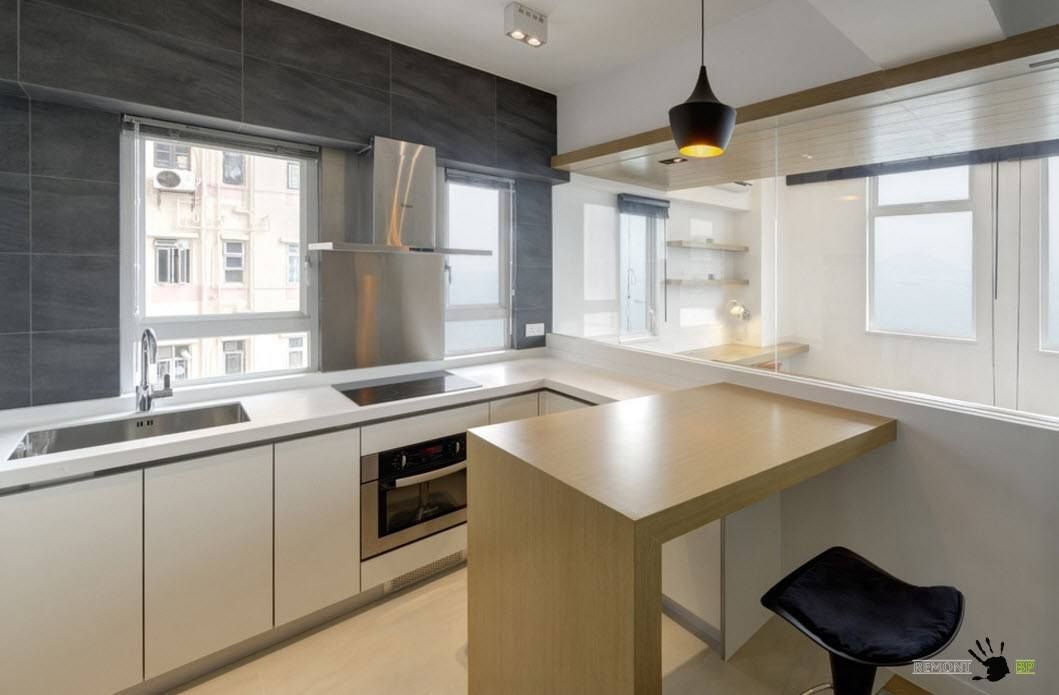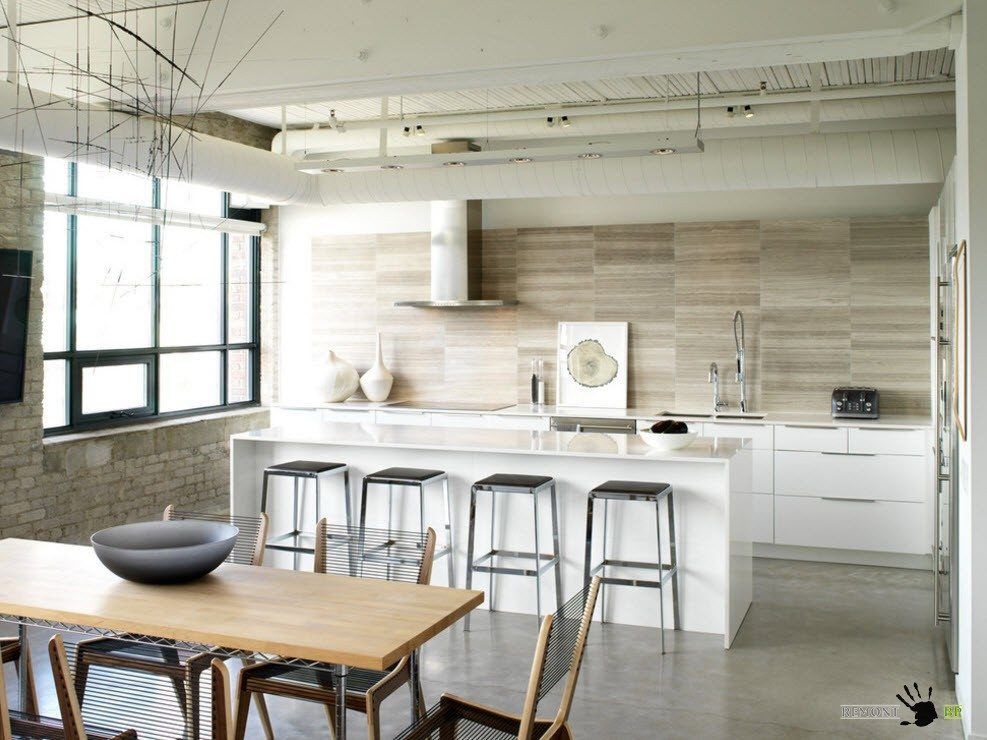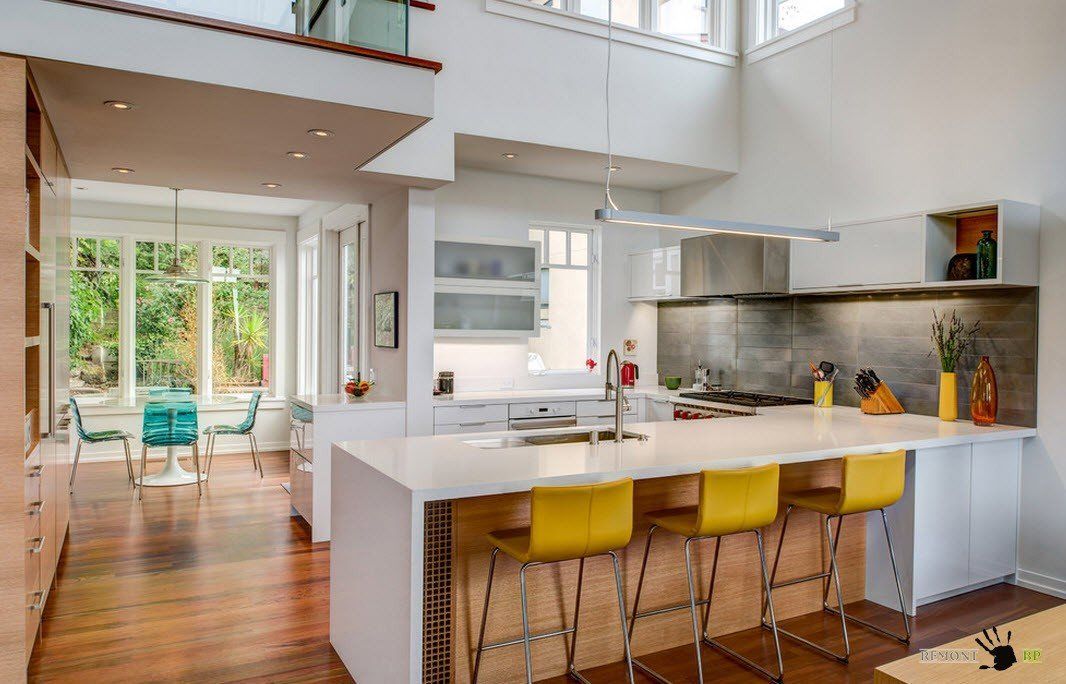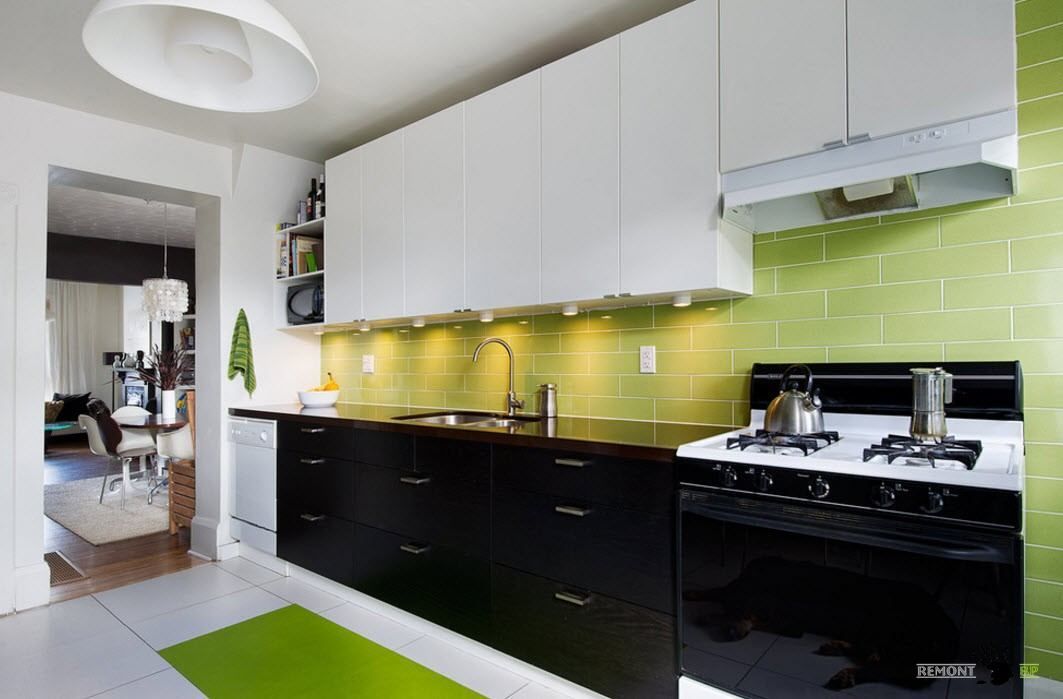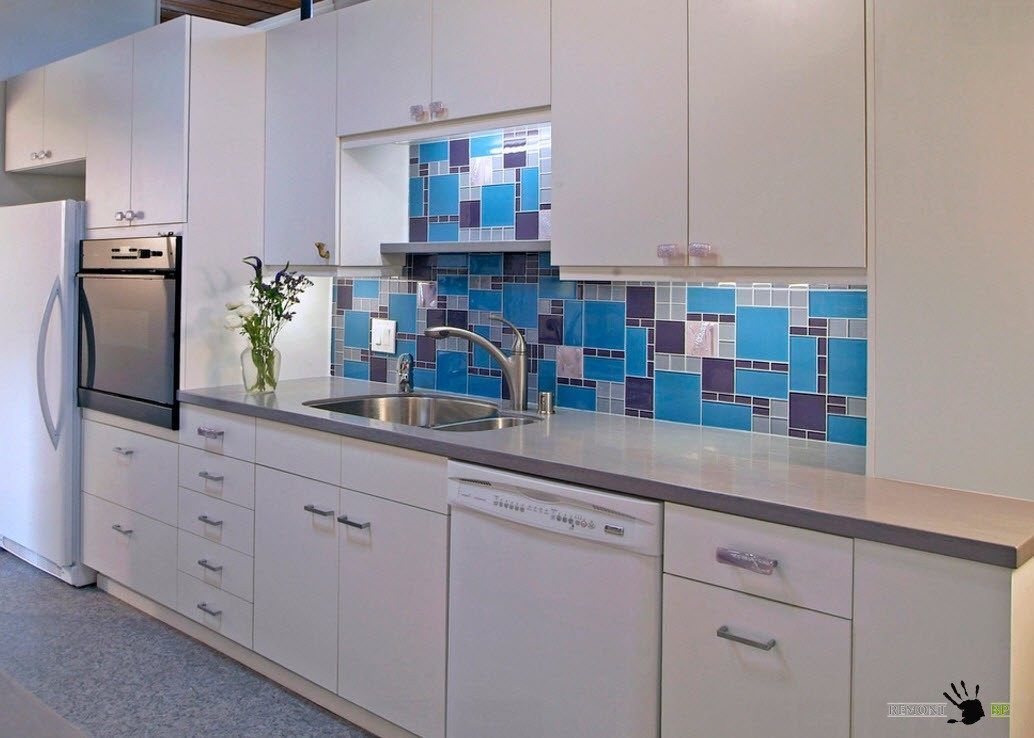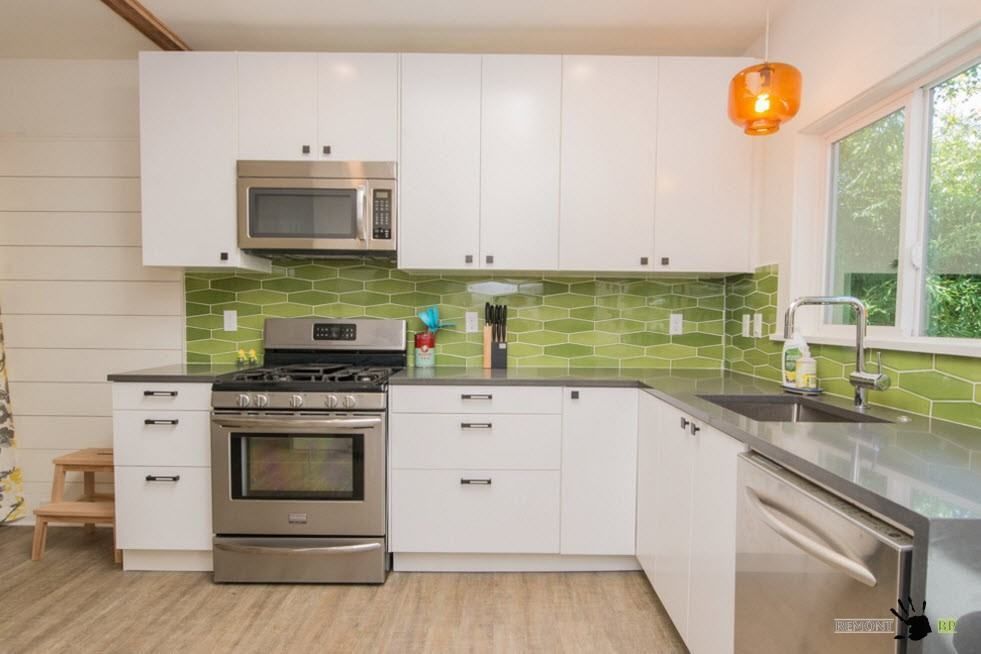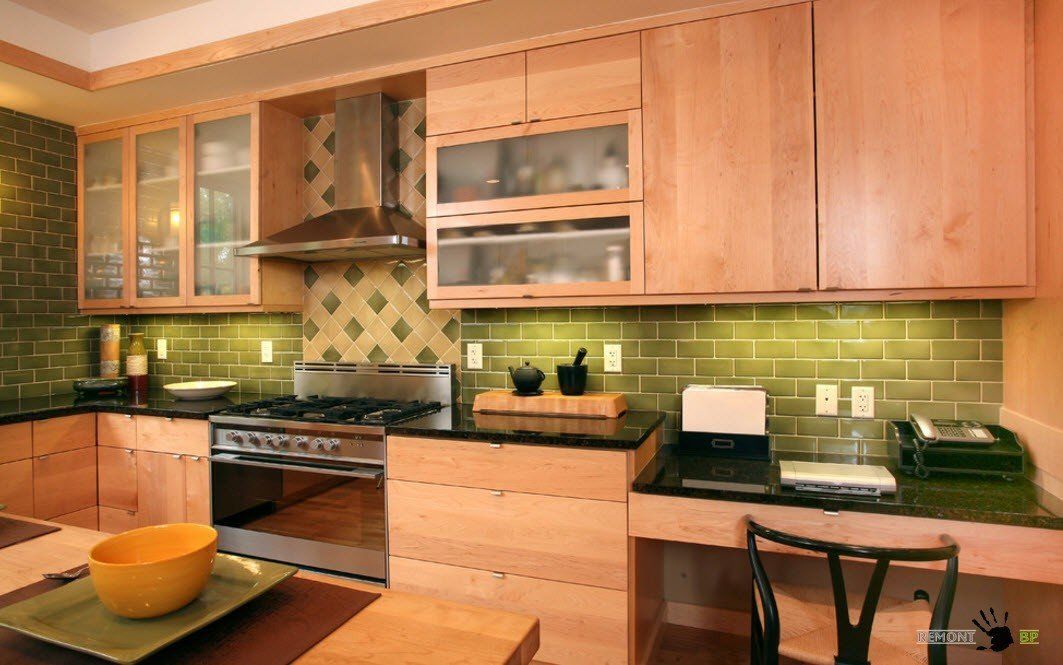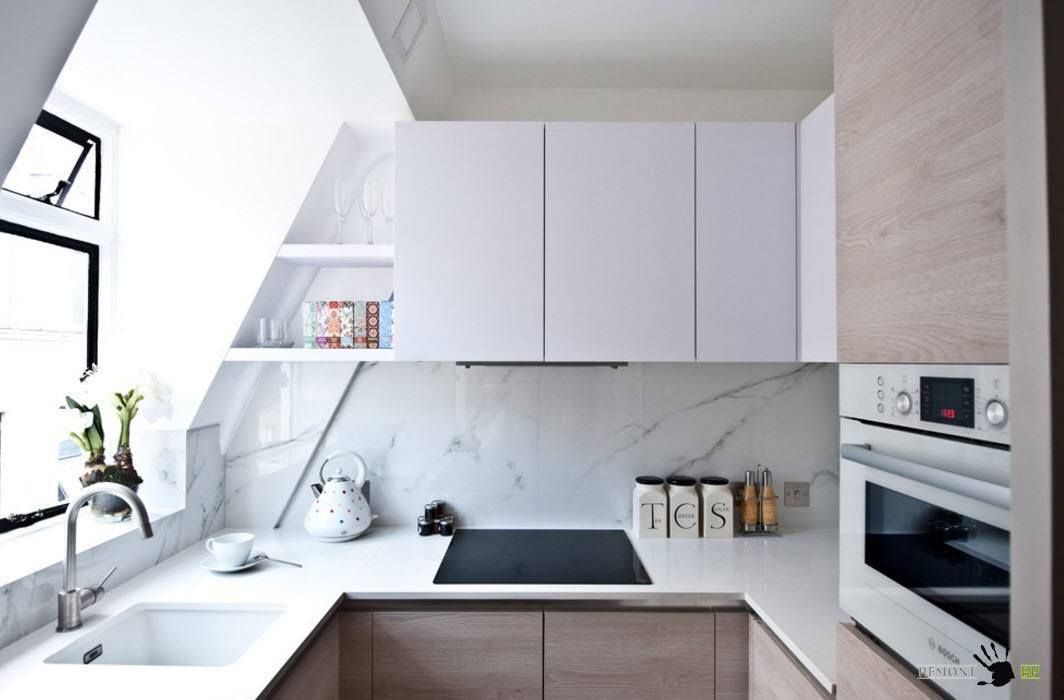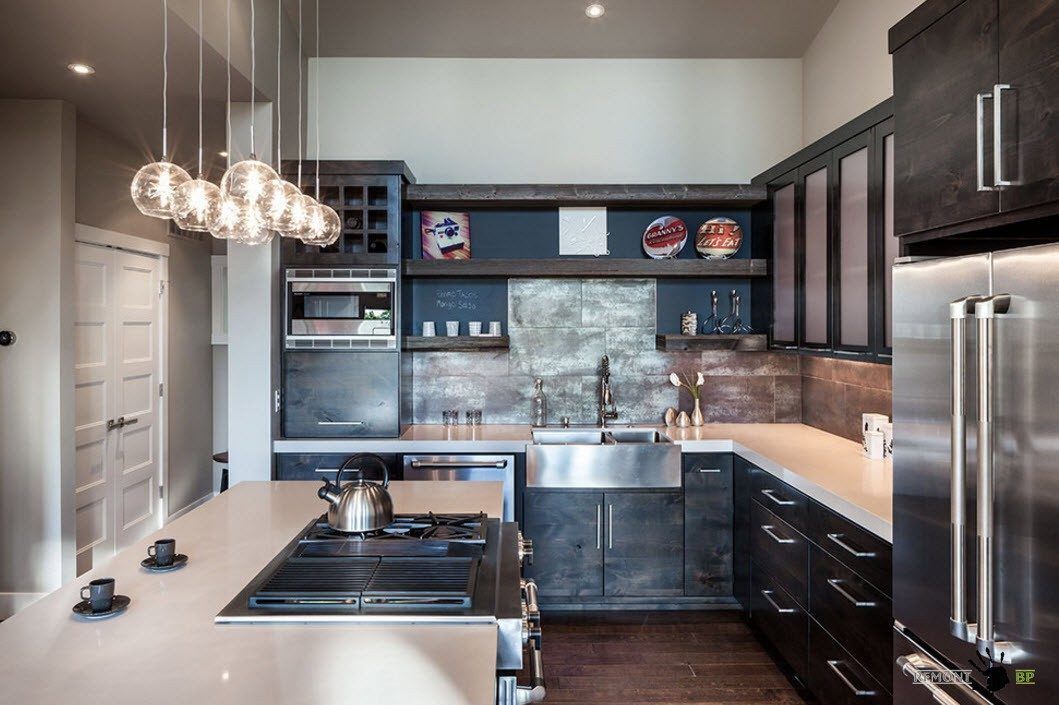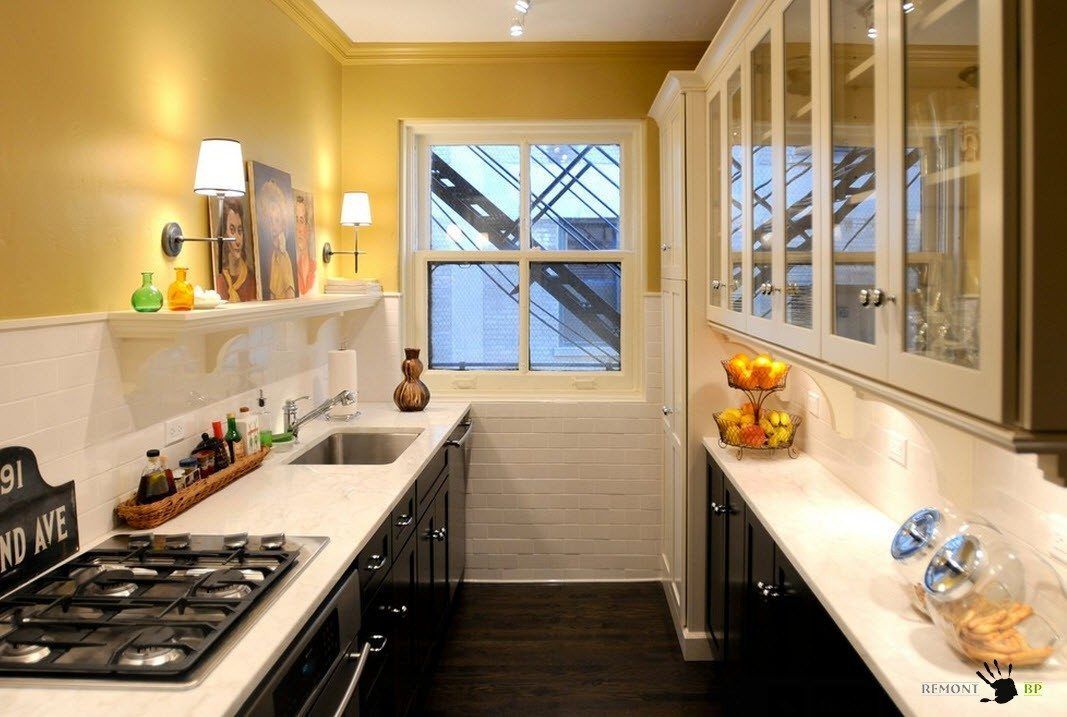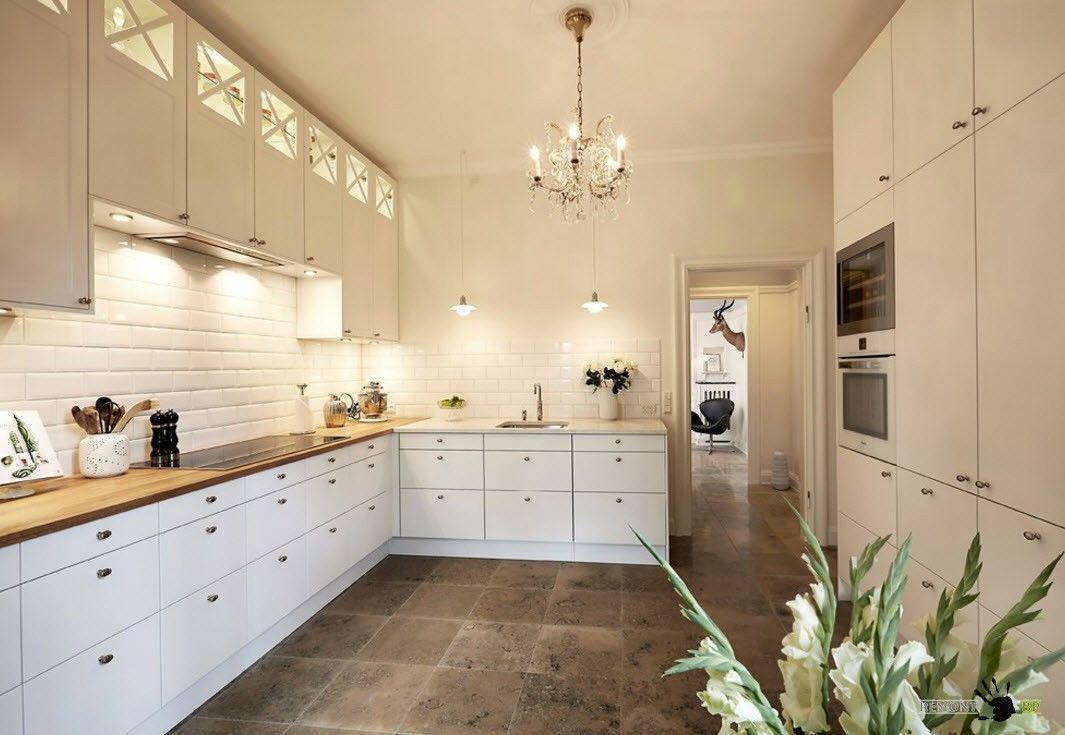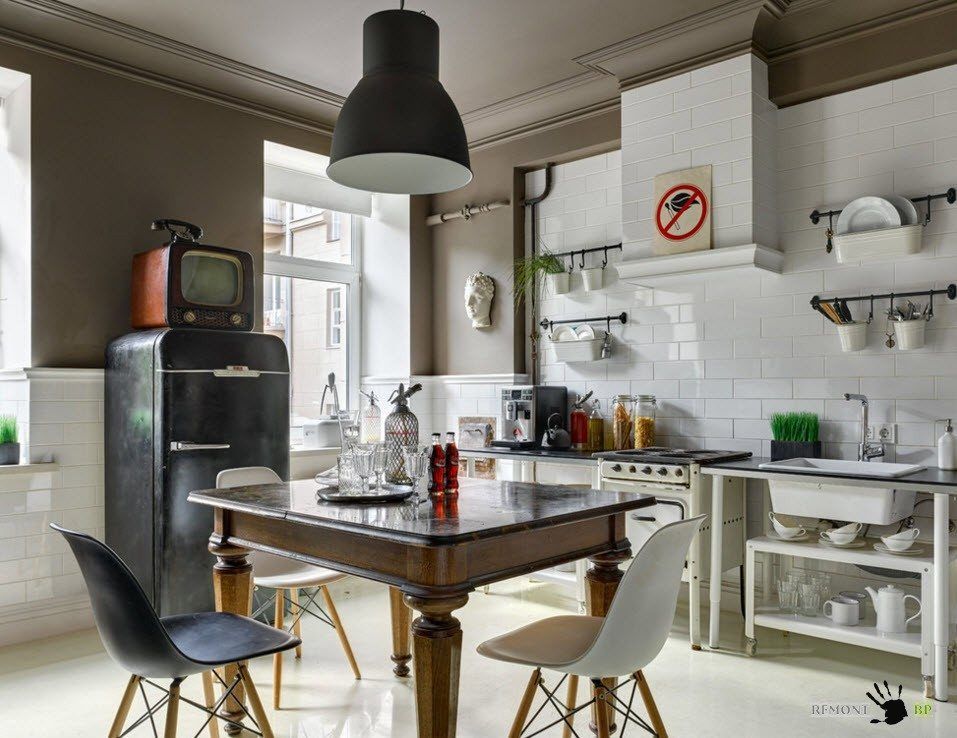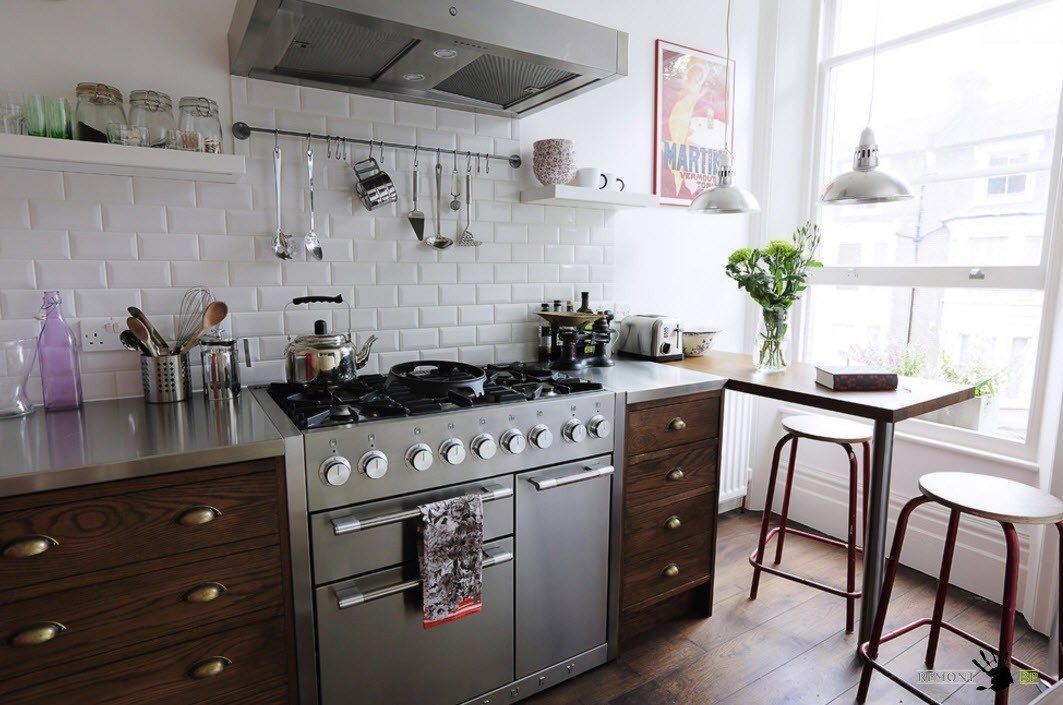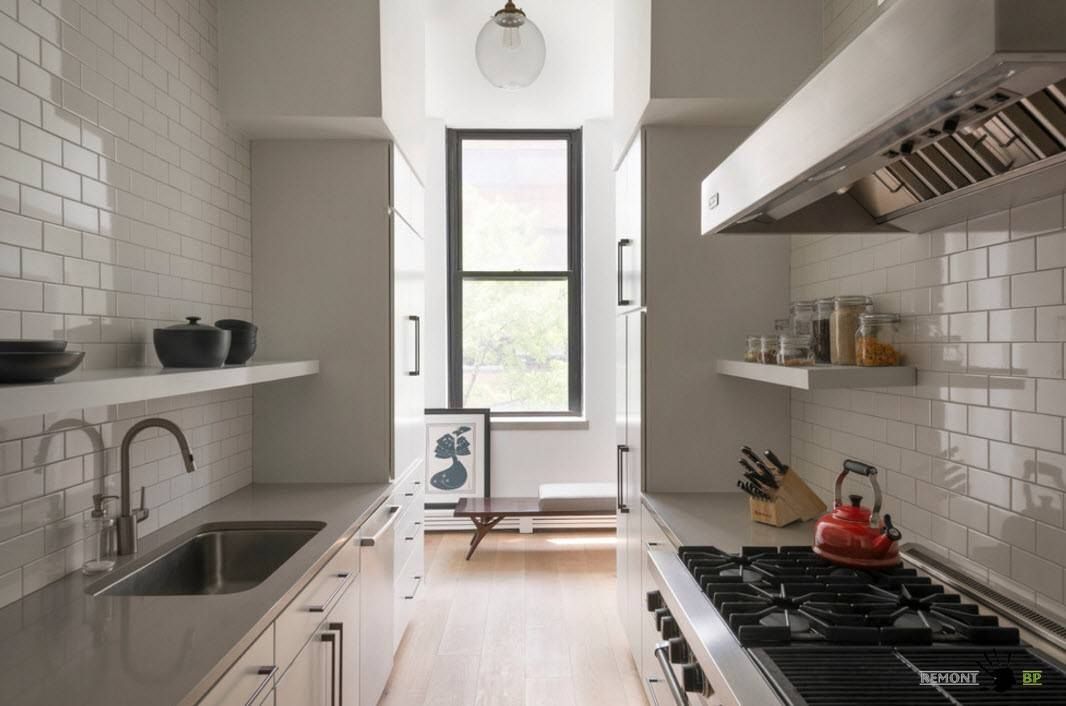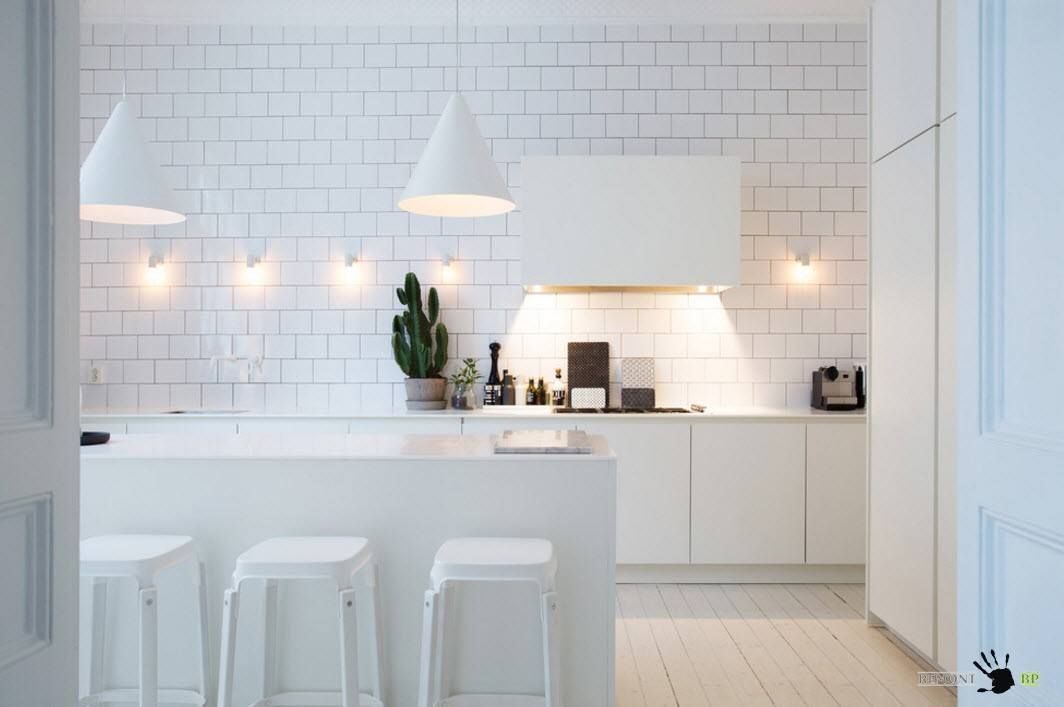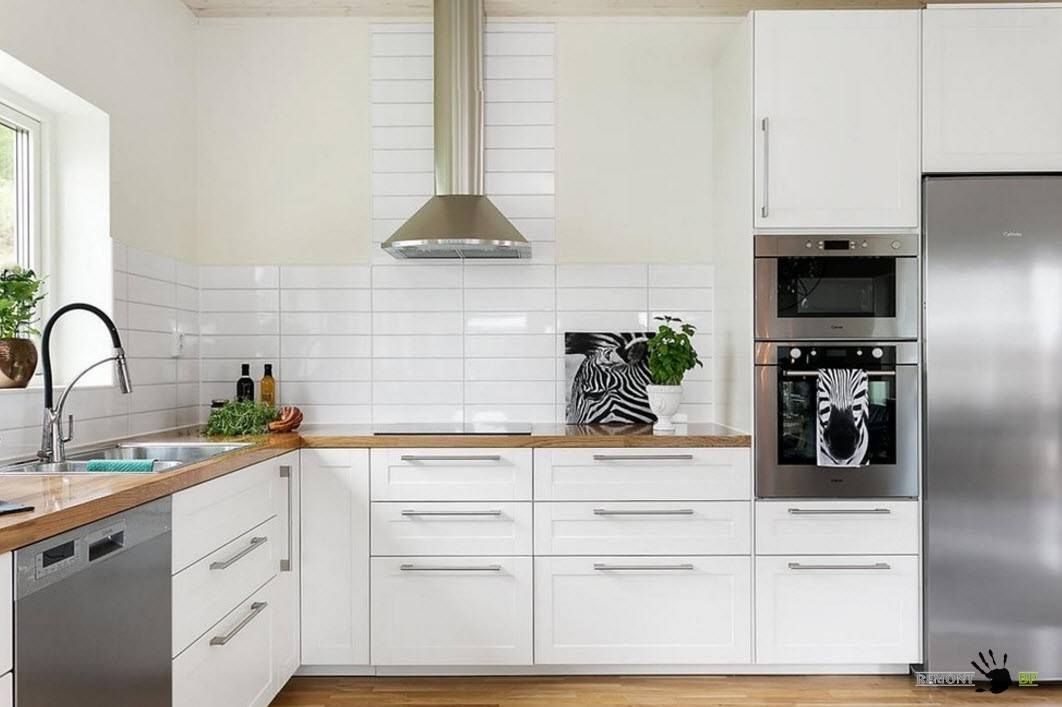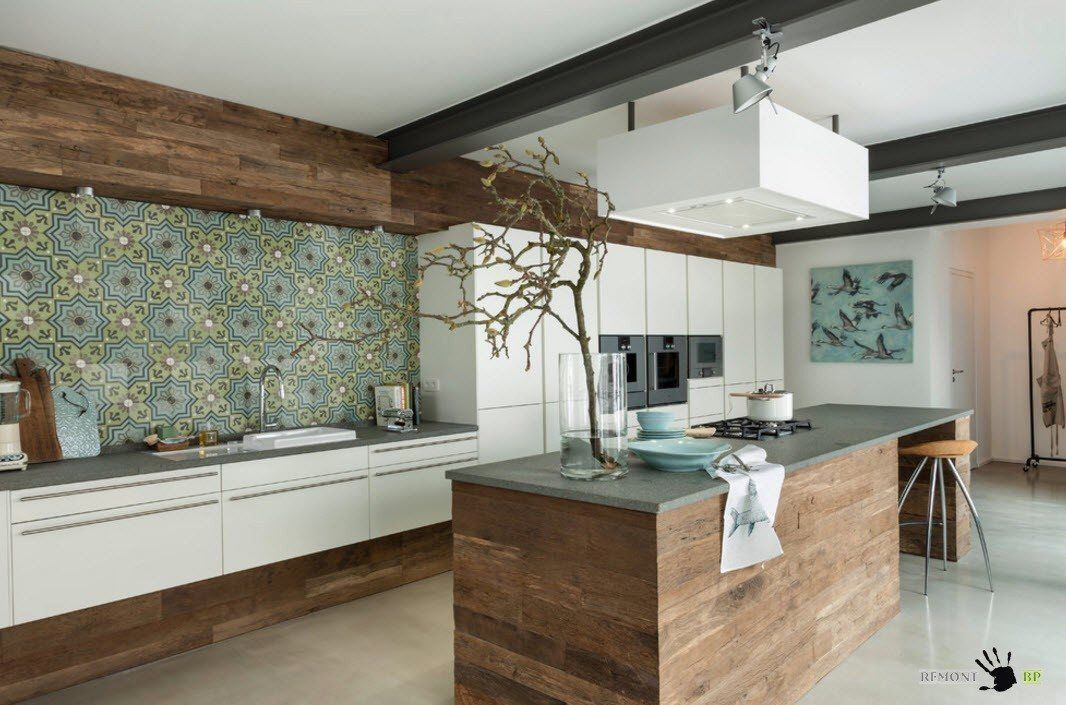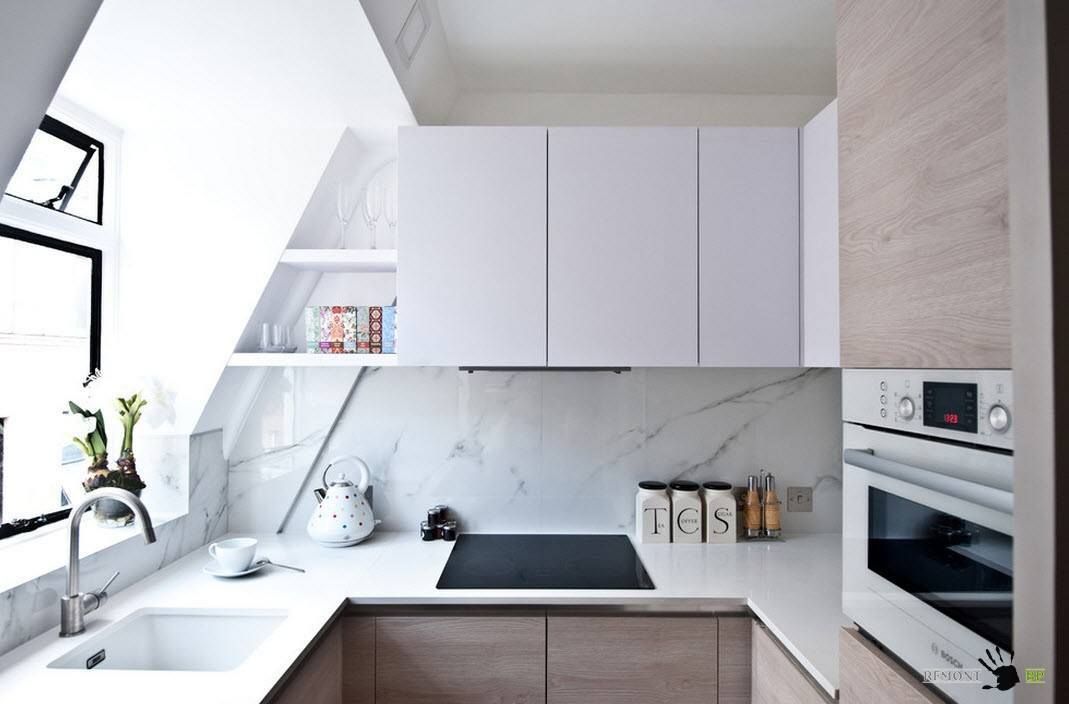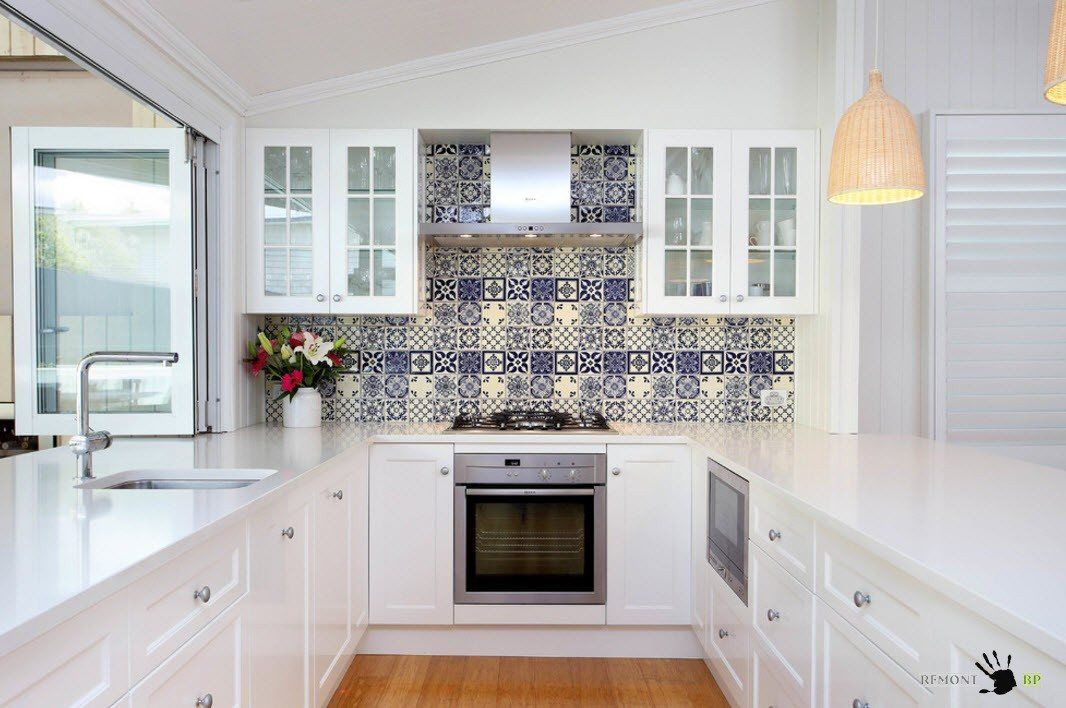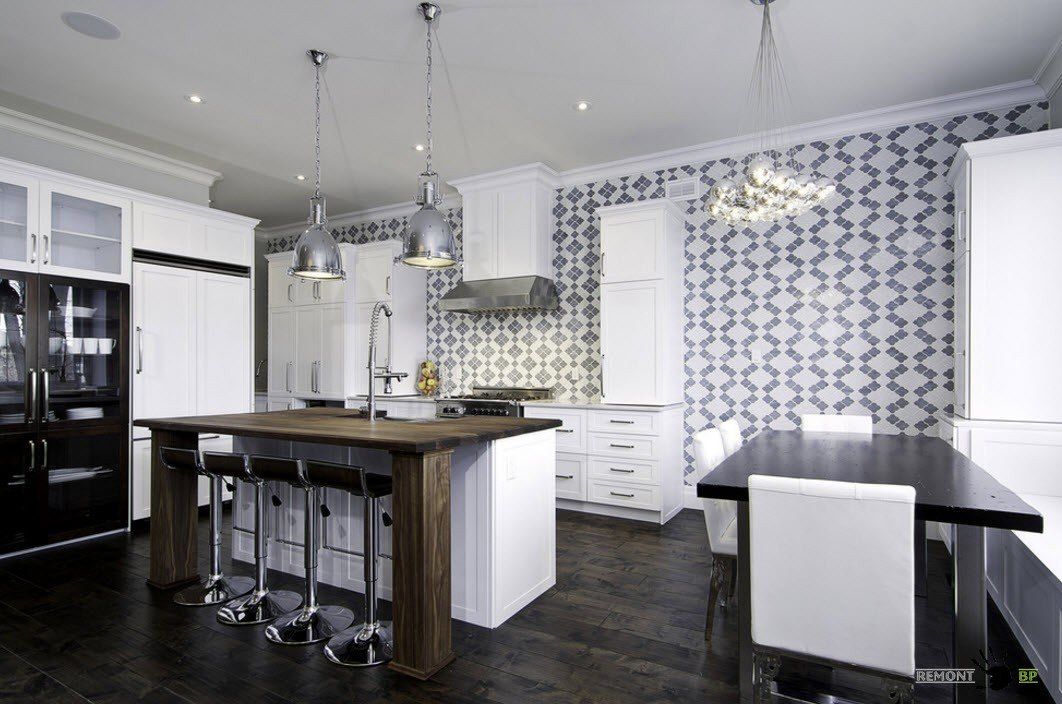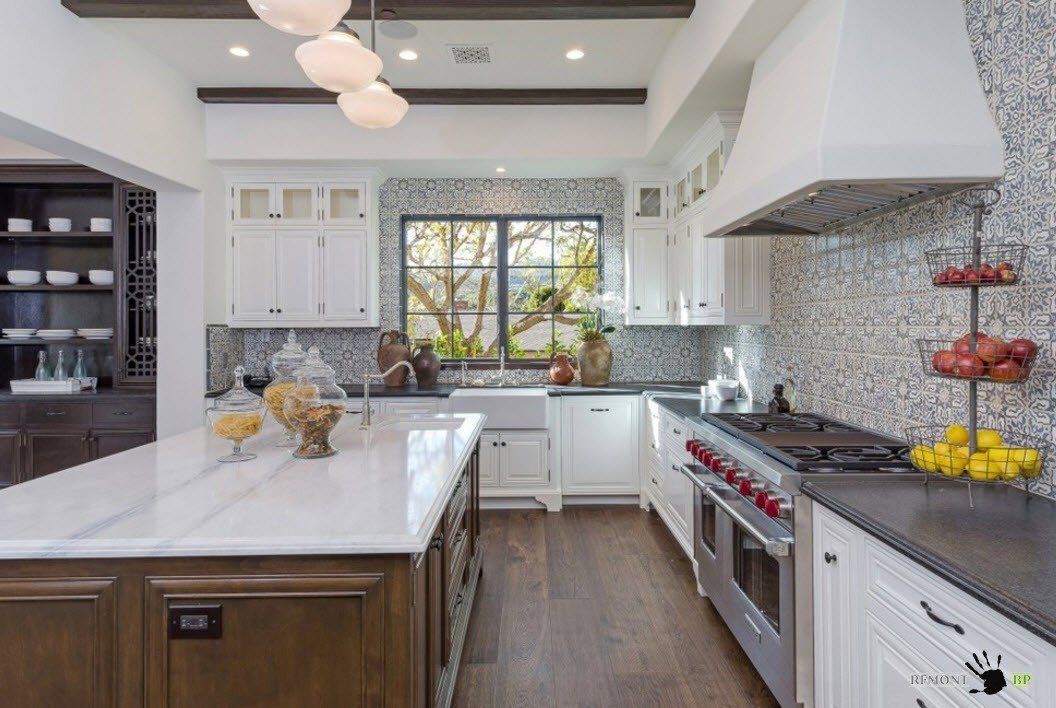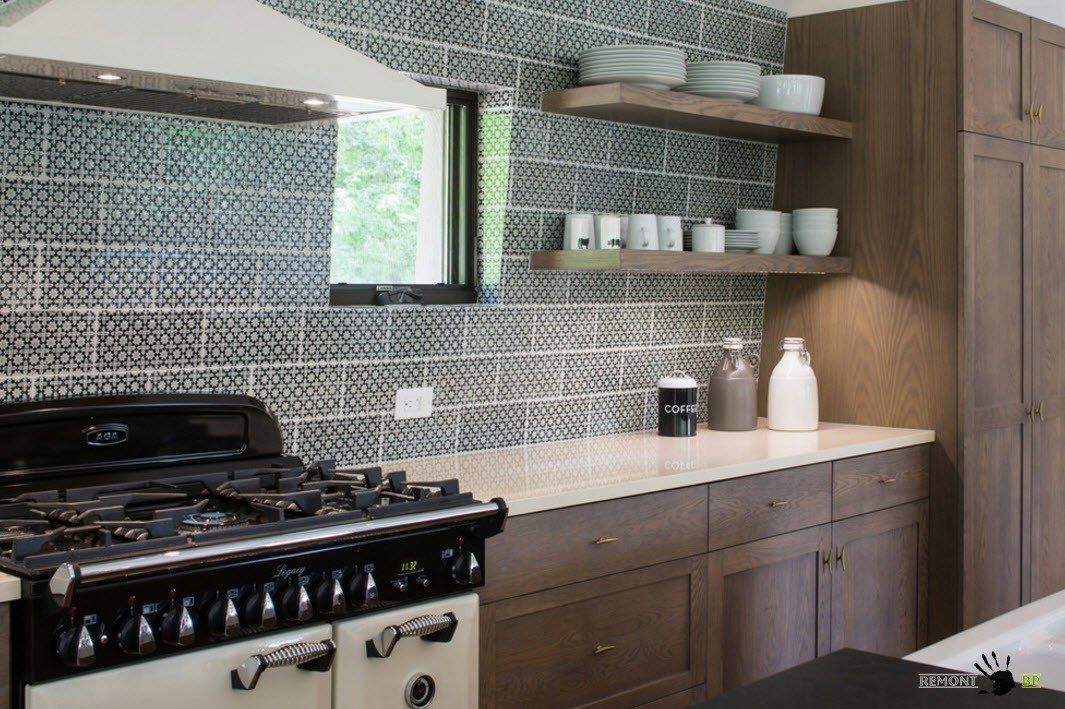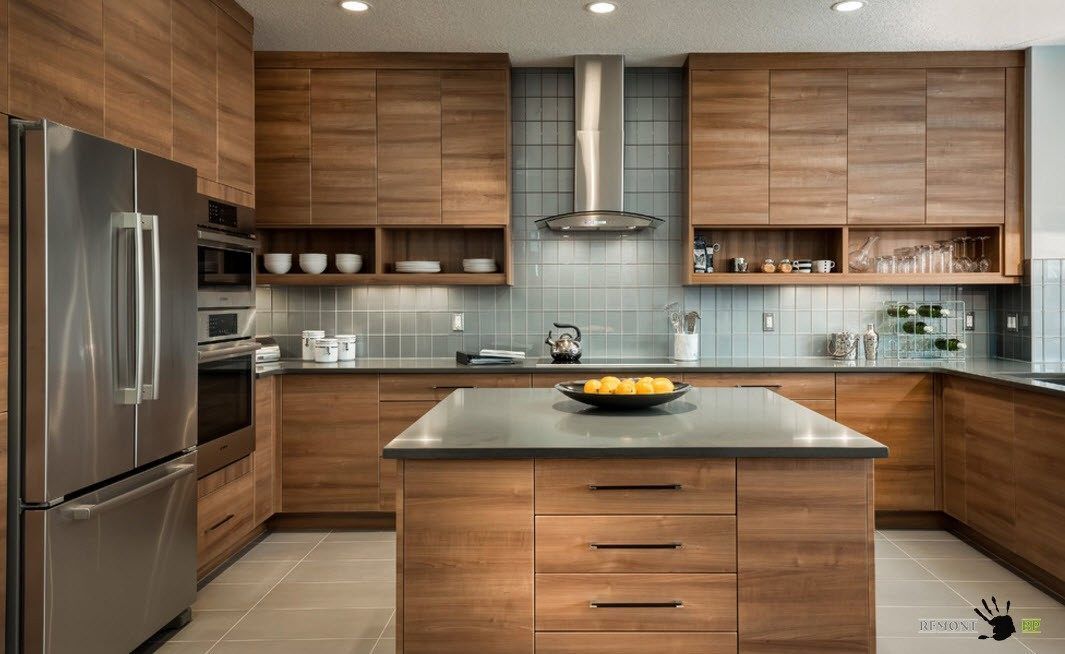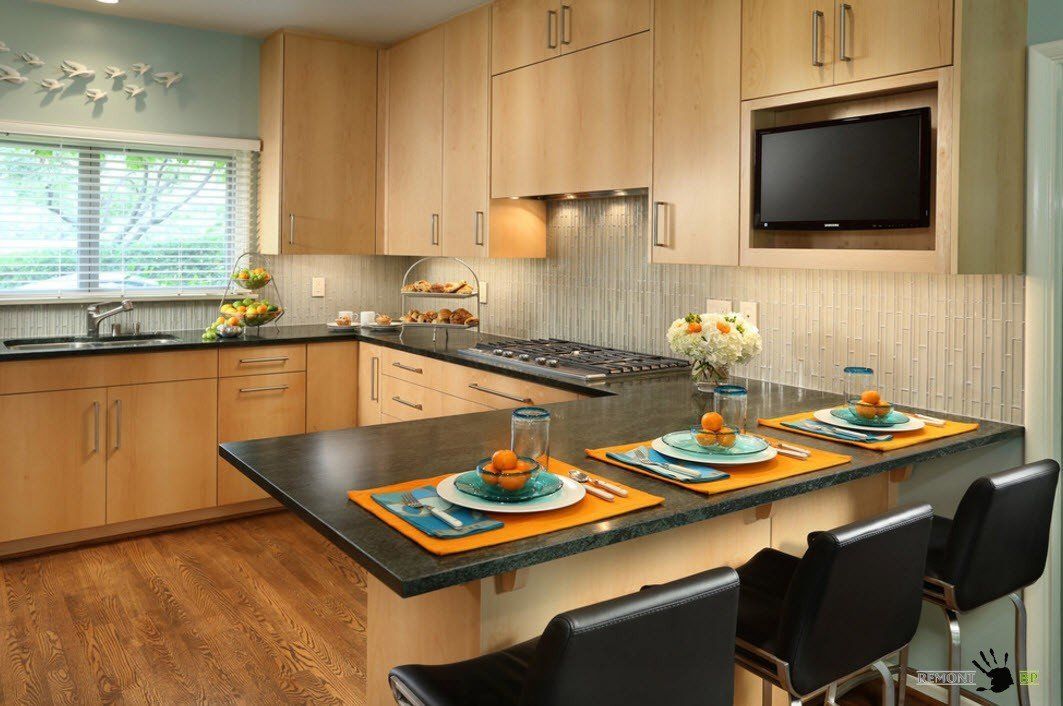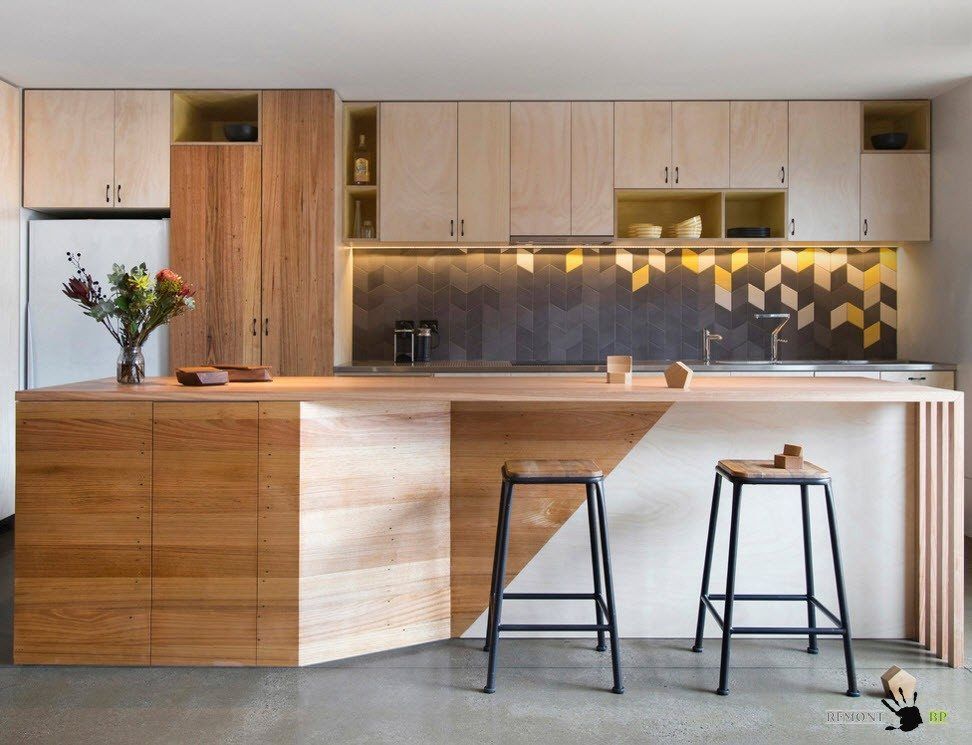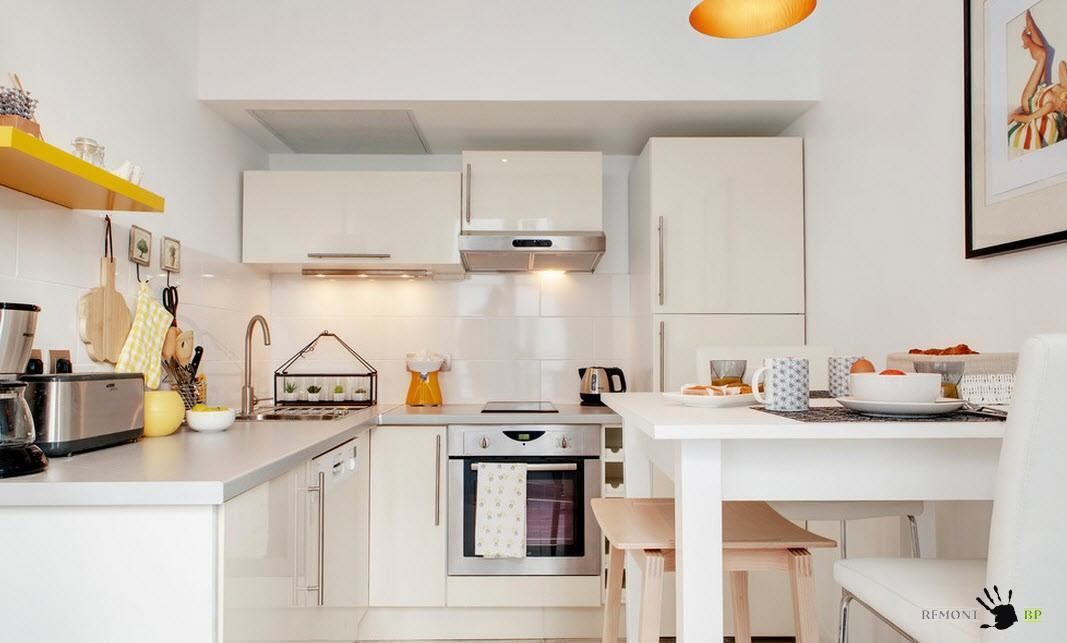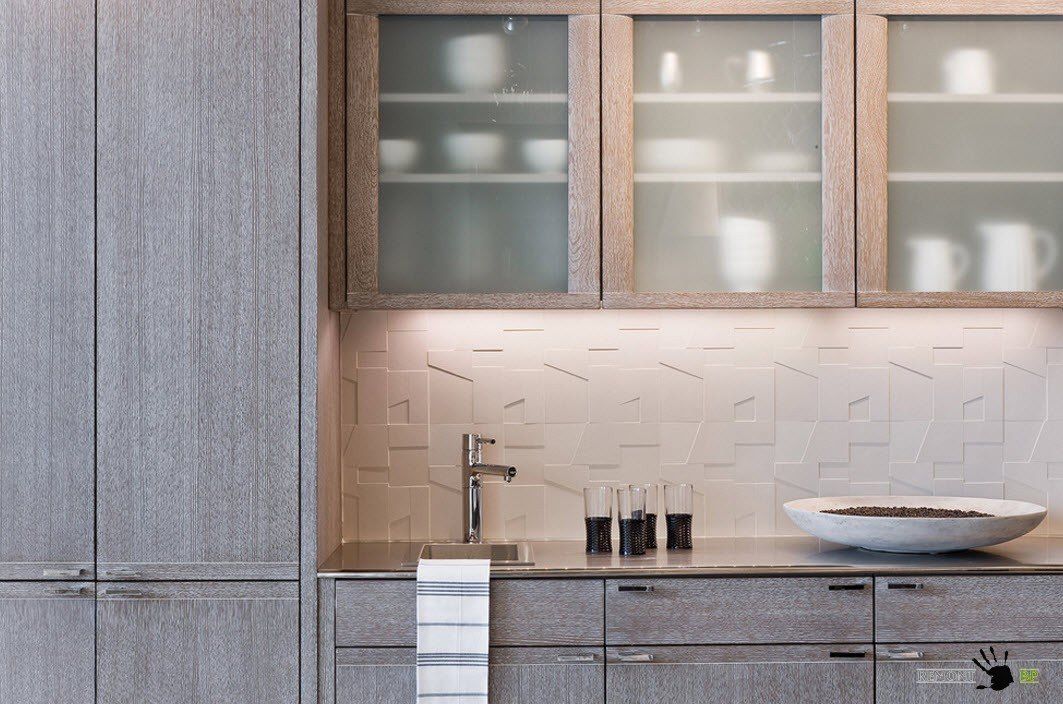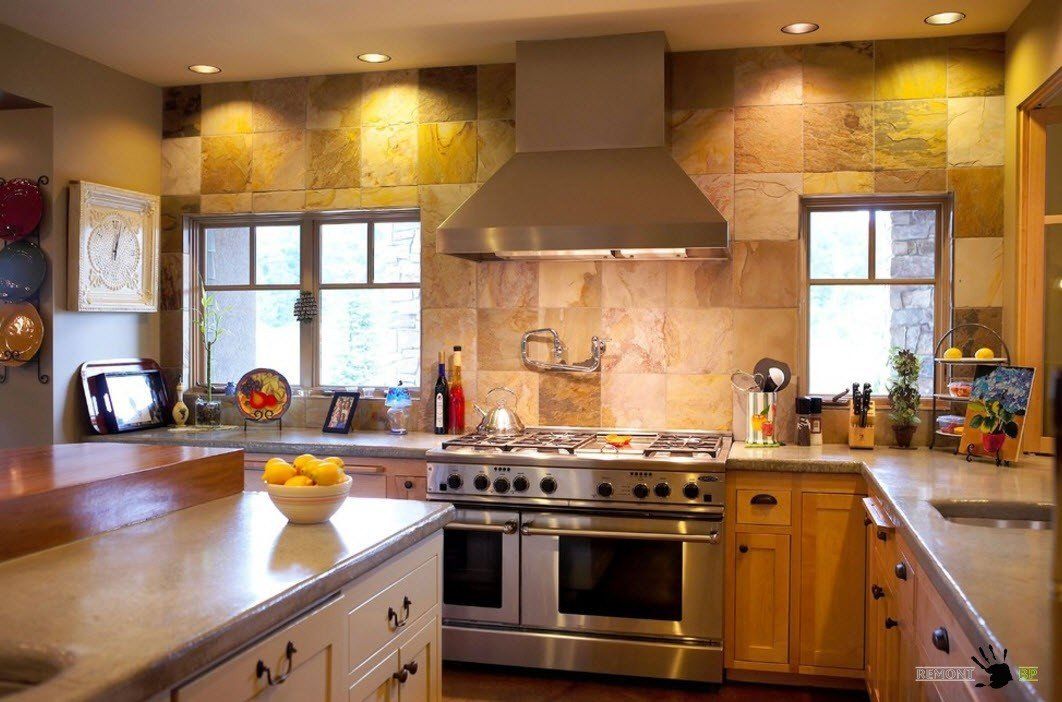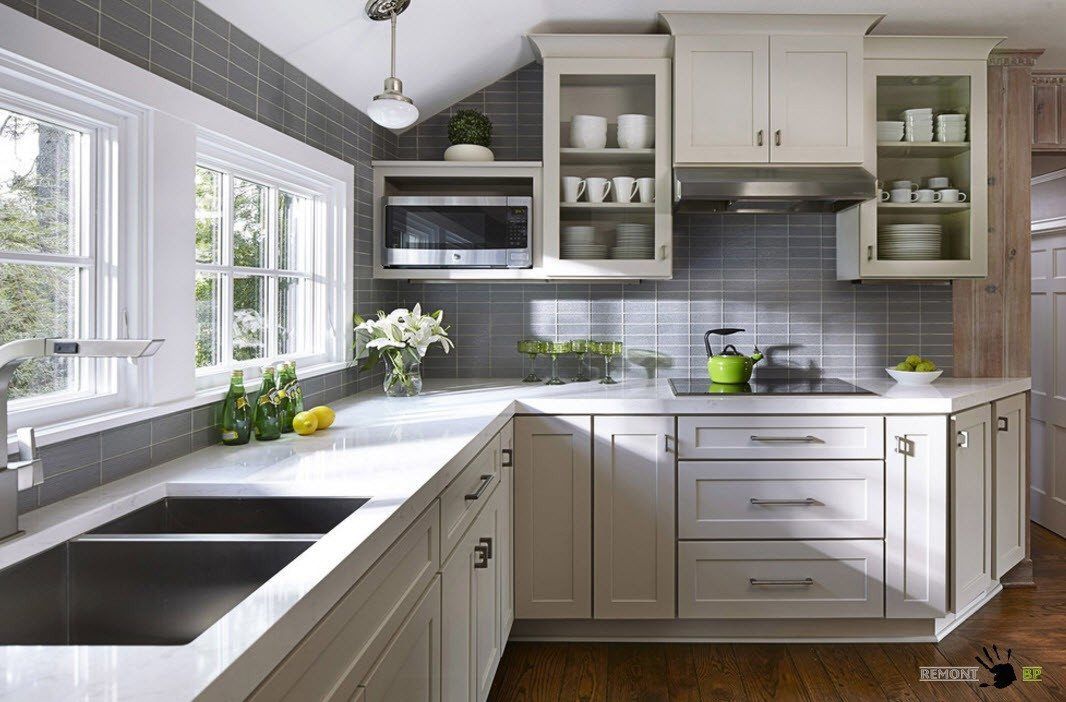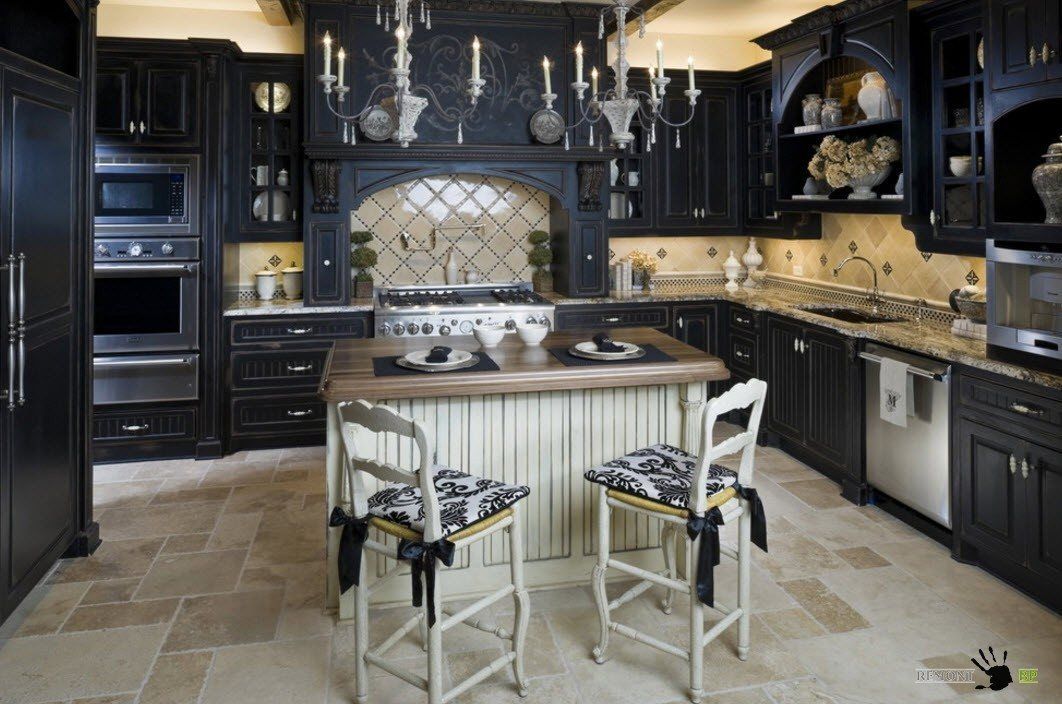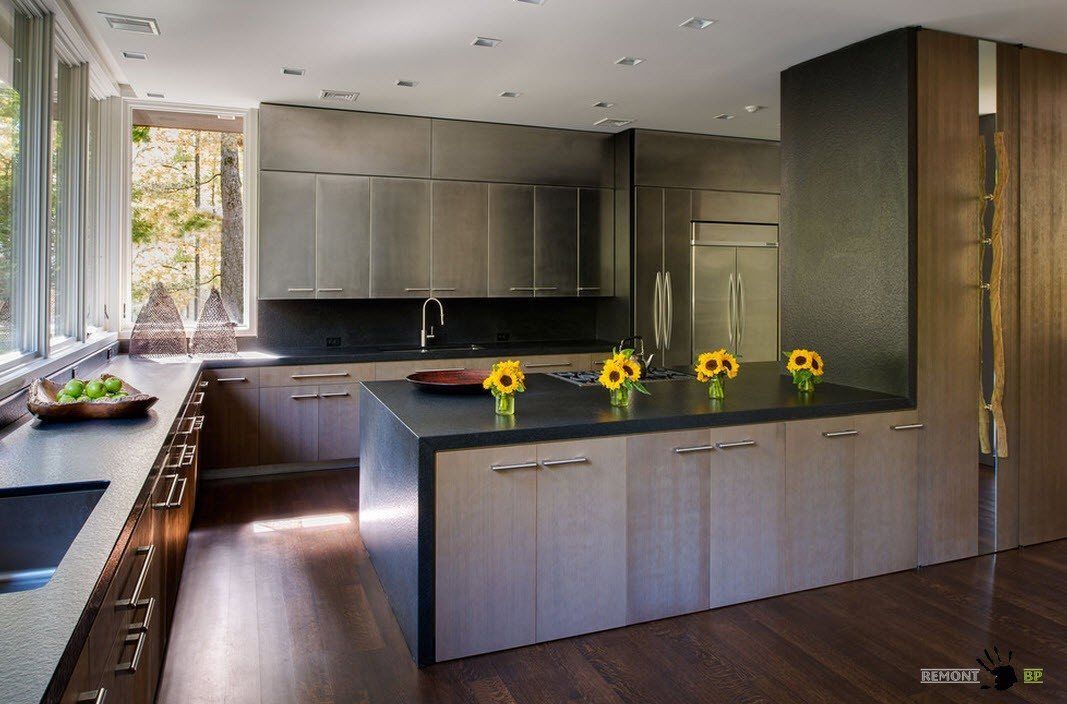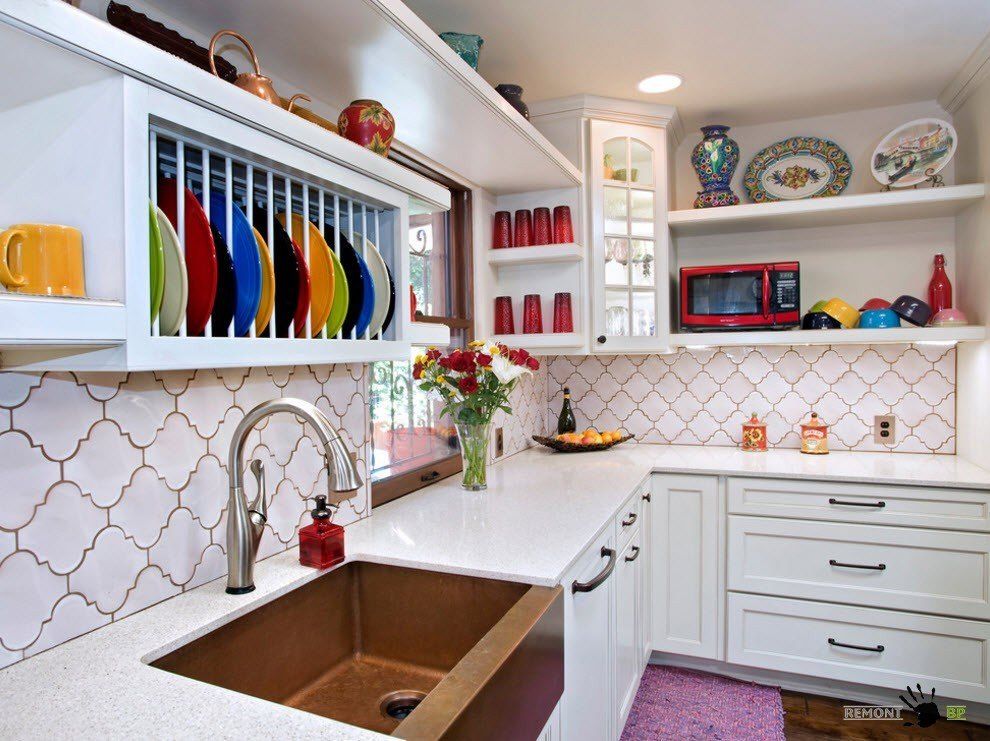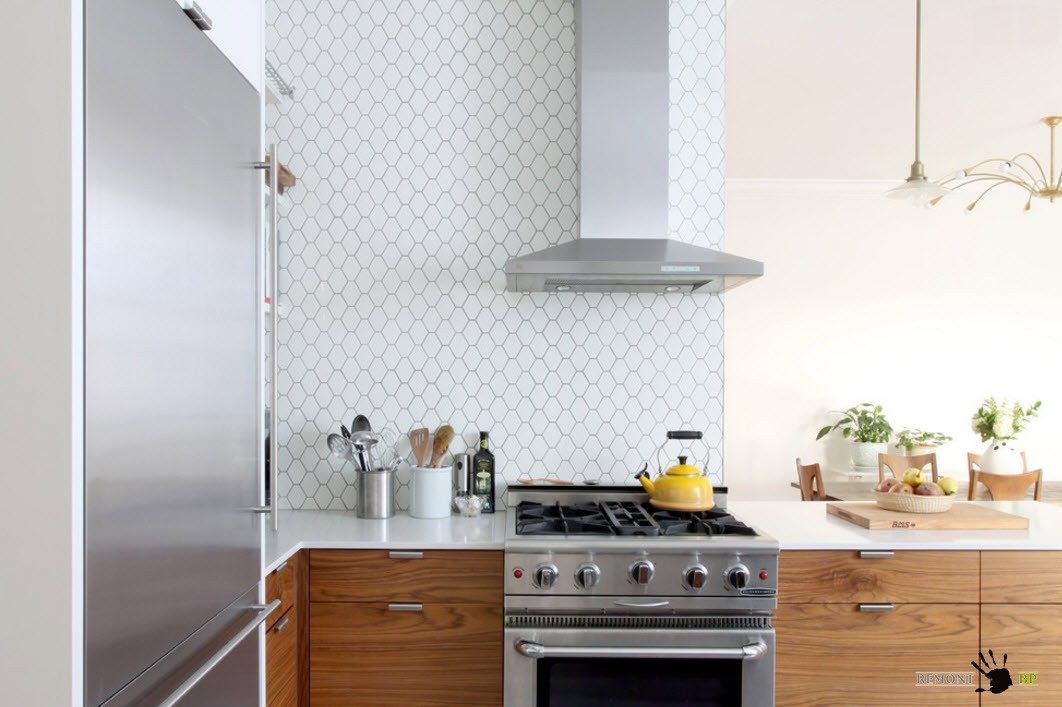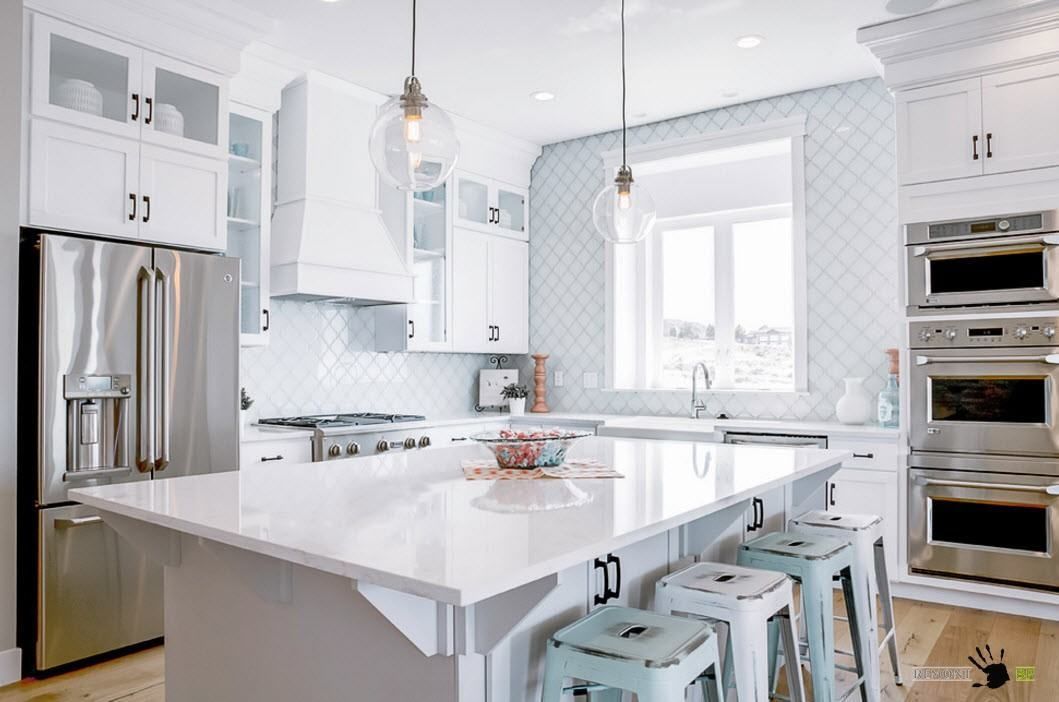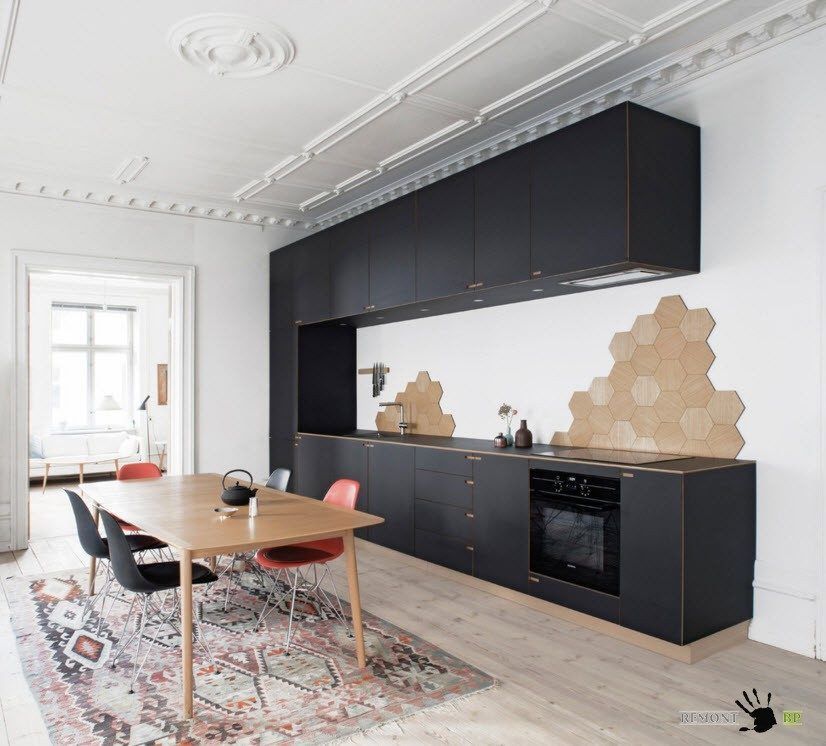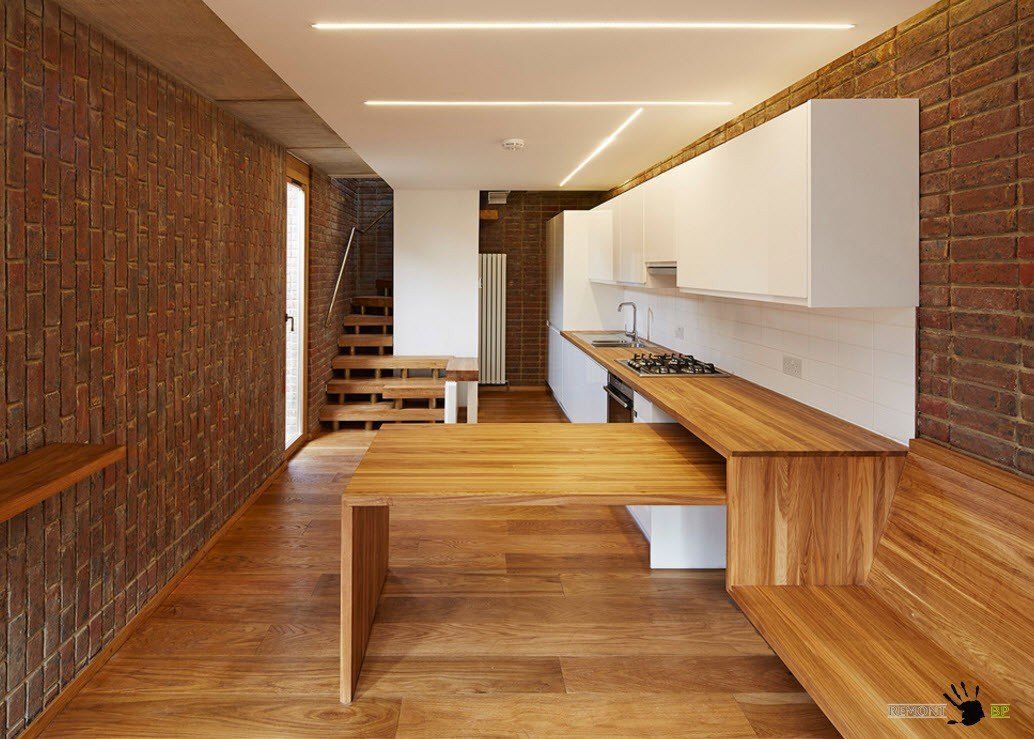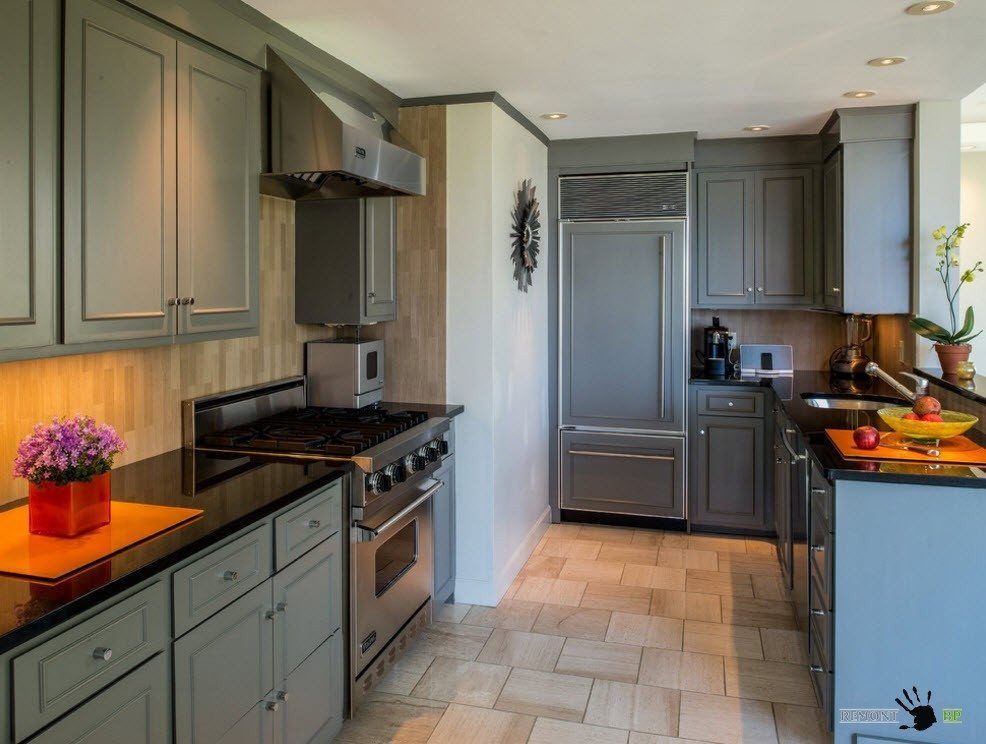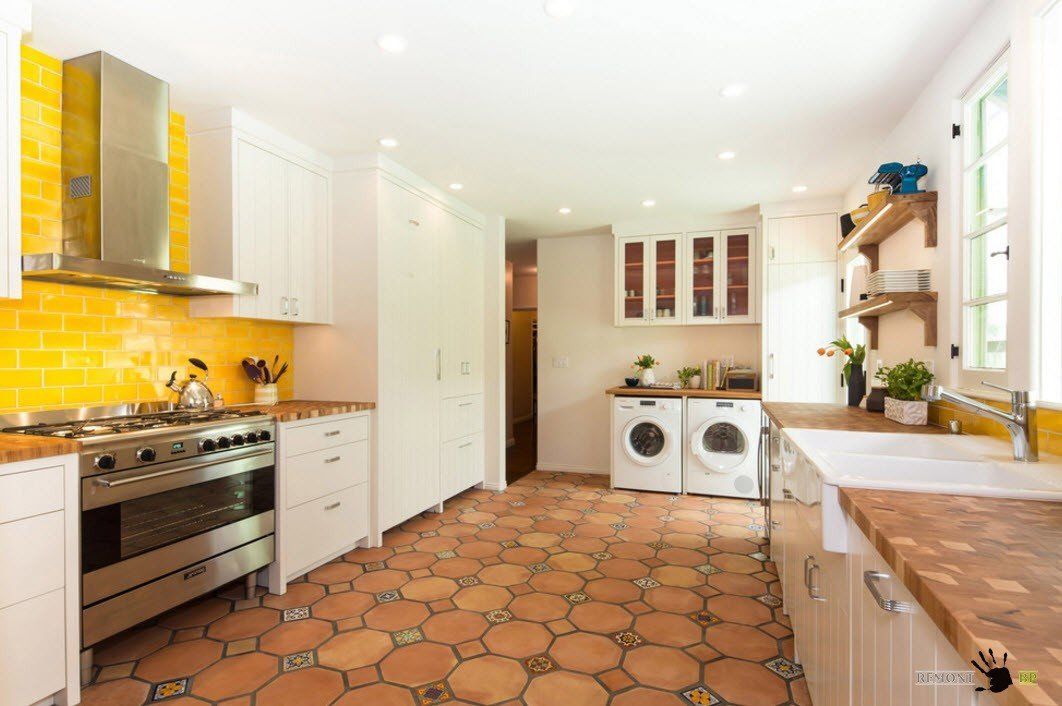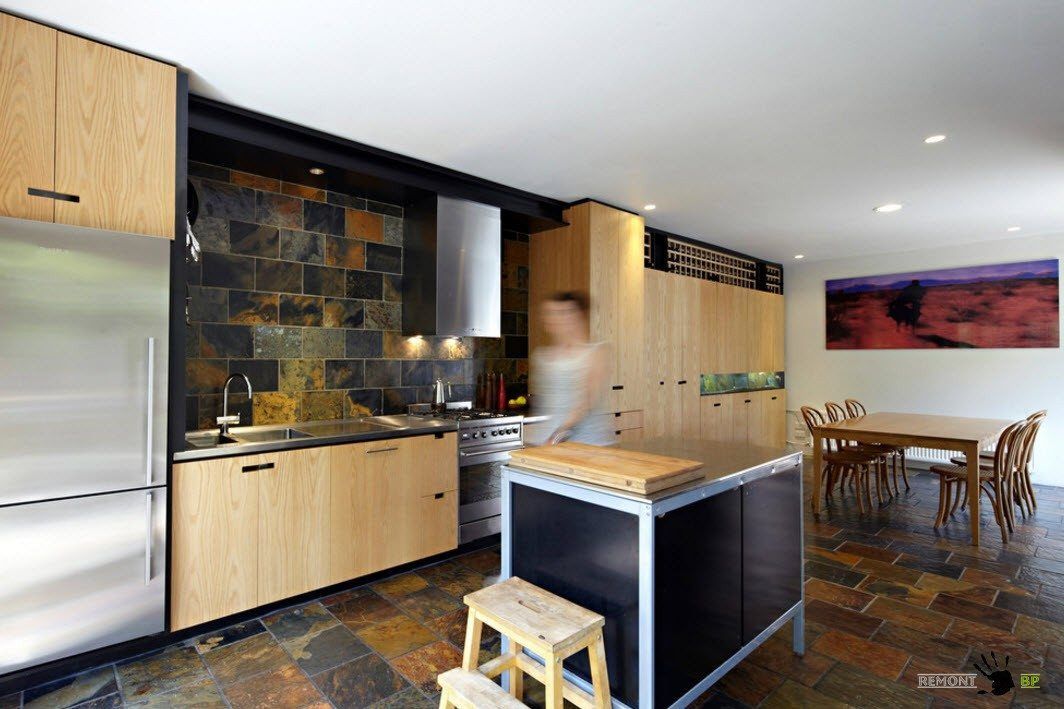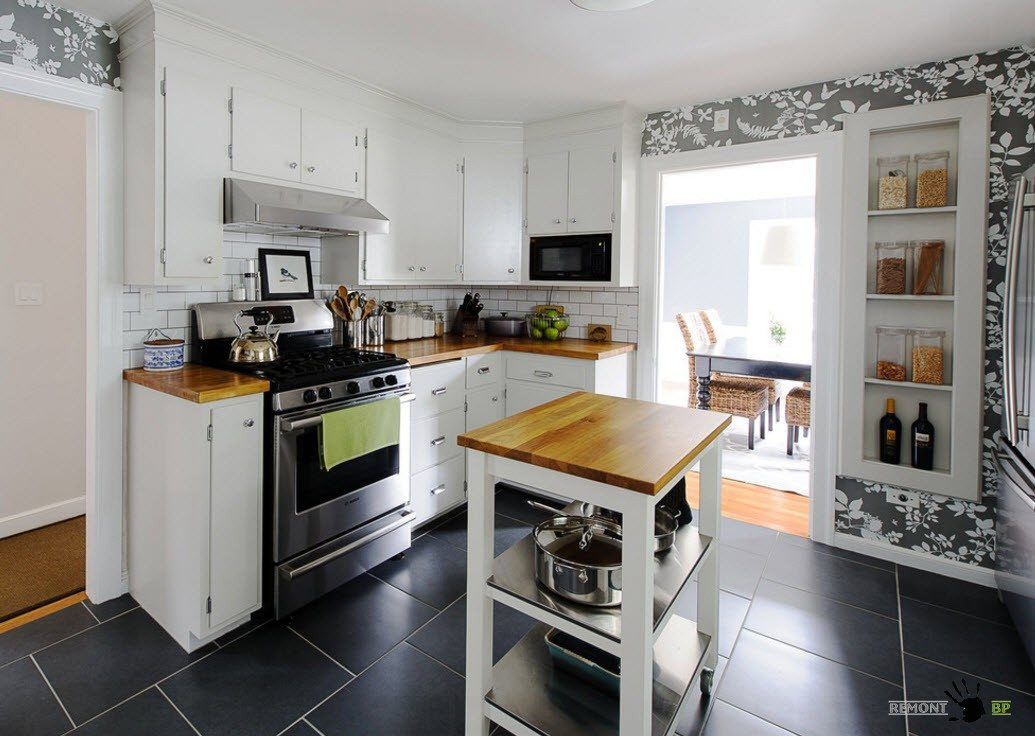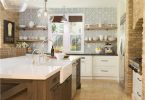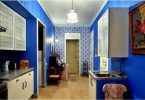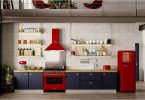Rarely is a modern kitchen design complete without the use of ceramic or stone tiles. It is difficult to imagine a more practical and aesthetic coating for a kitchen apron. Some kitchen design styles are characterized by the use of ceramics not only for facing the surface between countertops and the upper tier of kitchen cabinets, but also for floors and even walls completely. To provide reliable protection for kitchen surfaces from moisture and temperature extremes, but at the same time not to turn the room into a bathroom or a toilet, having sustained stylistic, color and textured combinations, it is necessary to approach the choice of ceramic or stone tiles with special care..
- Advantages of ceramic tiles for cladding kitchen surfaces:
- high resistance to moisture;
- heat resistance, resistance to temperature changes;
- ease of care and the ability to use chemical cleaning agents;
- resistance to direct sunlight;
- durability with careful handling;
- rich palette of colors, ornaments, patterns;
- the possibility of imitation of stone, wood and glass surfaces, glossy and matte finish.
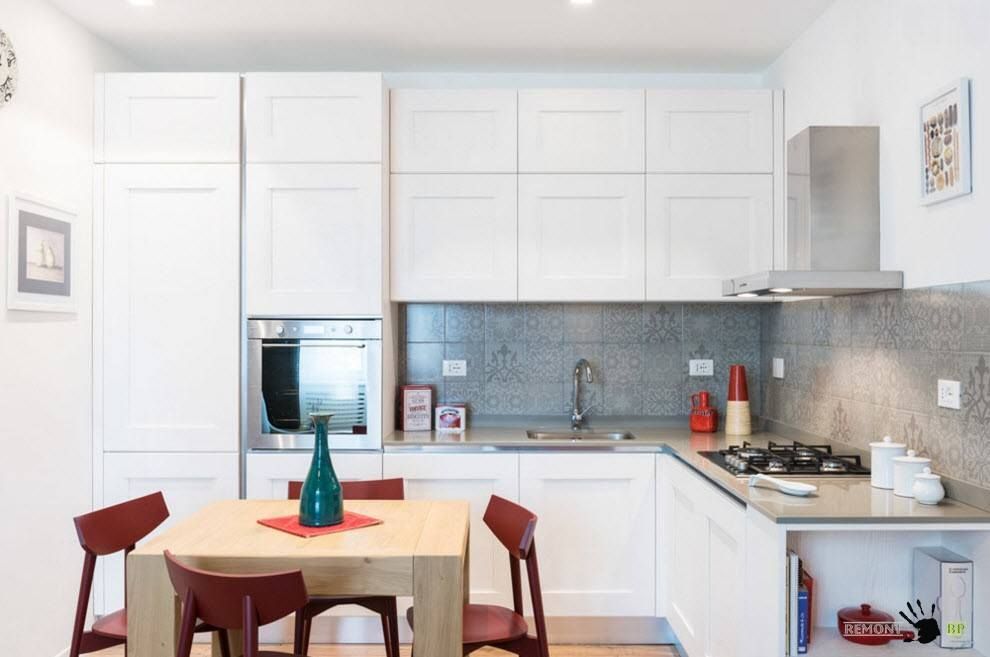
- But, like any facing material, tiles have disadvantages:
- quite high cost compared to wallpaper, painting and wall panels;
- the impossibility of self-installation without possessing certain skills, which means that payment for cladding specialists will need to be added to the cost of the material itself;
- the cladding process is a rather dirty work;
- if you change your mind in a couple of years or the color of the tiles gets bored, changing the facing will not be easy.
Useful tips for choosing ceramic tiles
1. One of the basic rules for a successful purchase of finishing material – go shopping only after you have finally decided on the design of the room. If the style of the interior, the color and texture of the facades of the kitchen set, the finishes of other surfaces, except for the kitchen apron or other planes that will be tiled, are determined, then you can proceed to the next stage. Do not forget with the choice of the material and color of the countertop, its combination with the material of the kitchen apron will have considerable weight in the whole image of the kitchen. Decide whether you want the kitchen apron to act as a contrast to the countertops and facades of the kitchen furniture ensemble, or to support the overall color scheme?
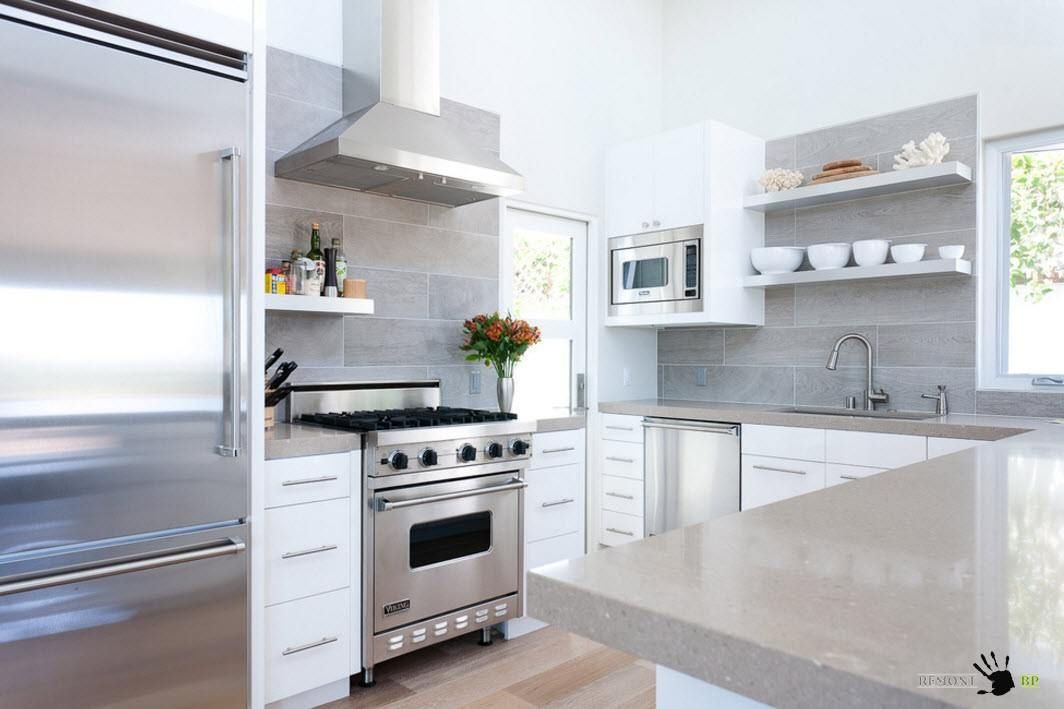
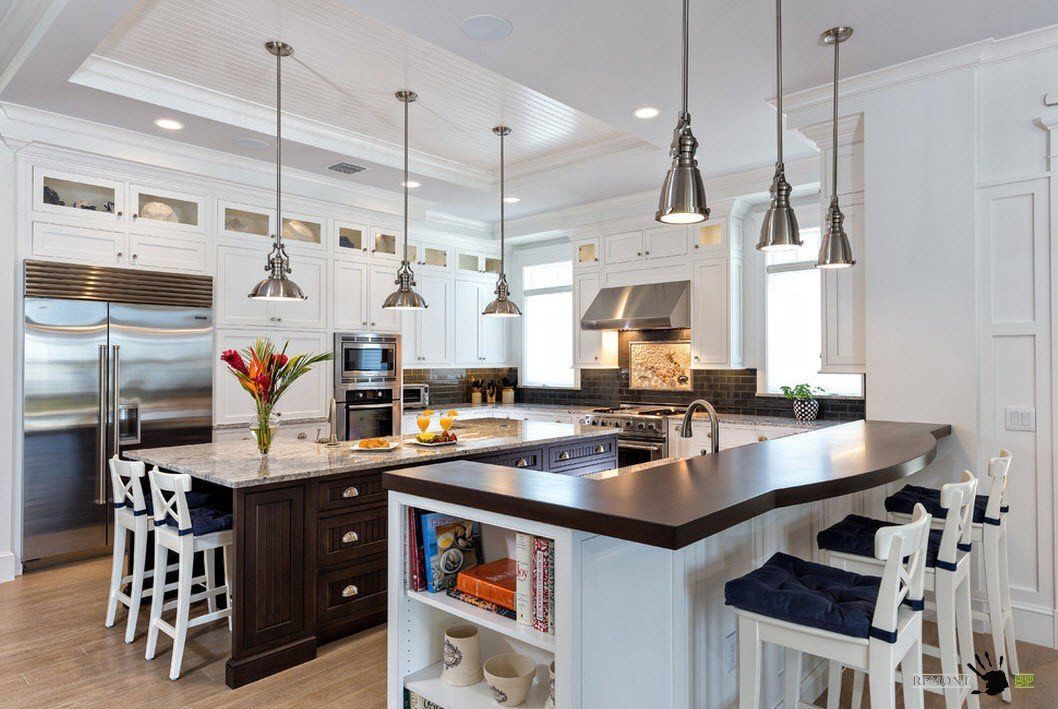

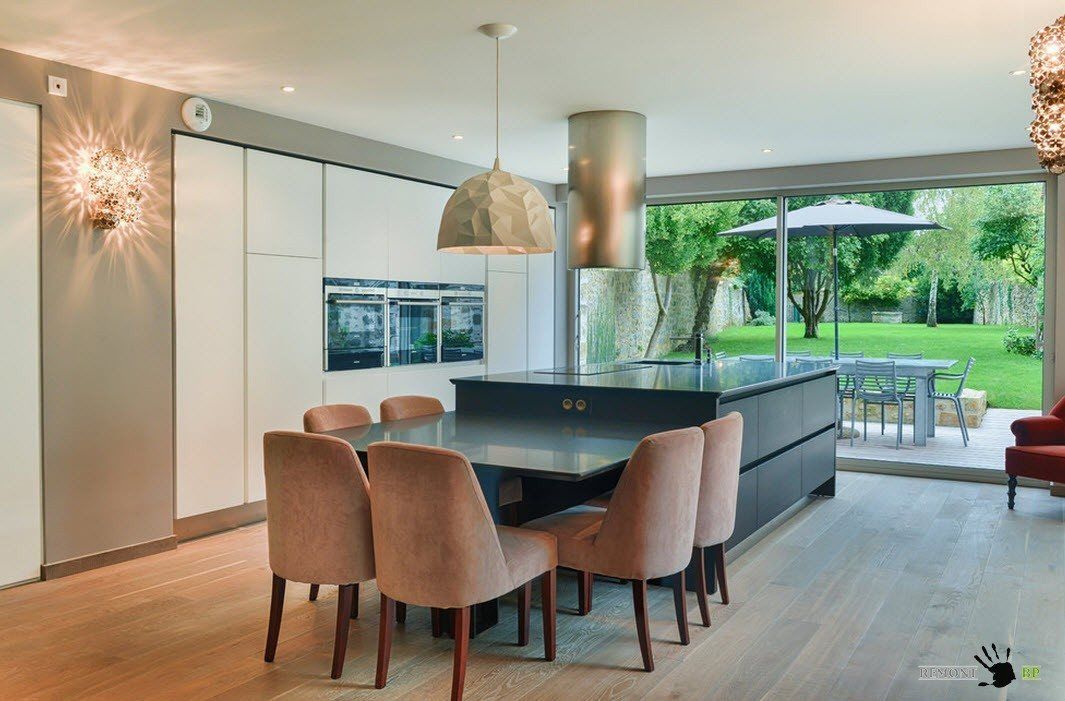
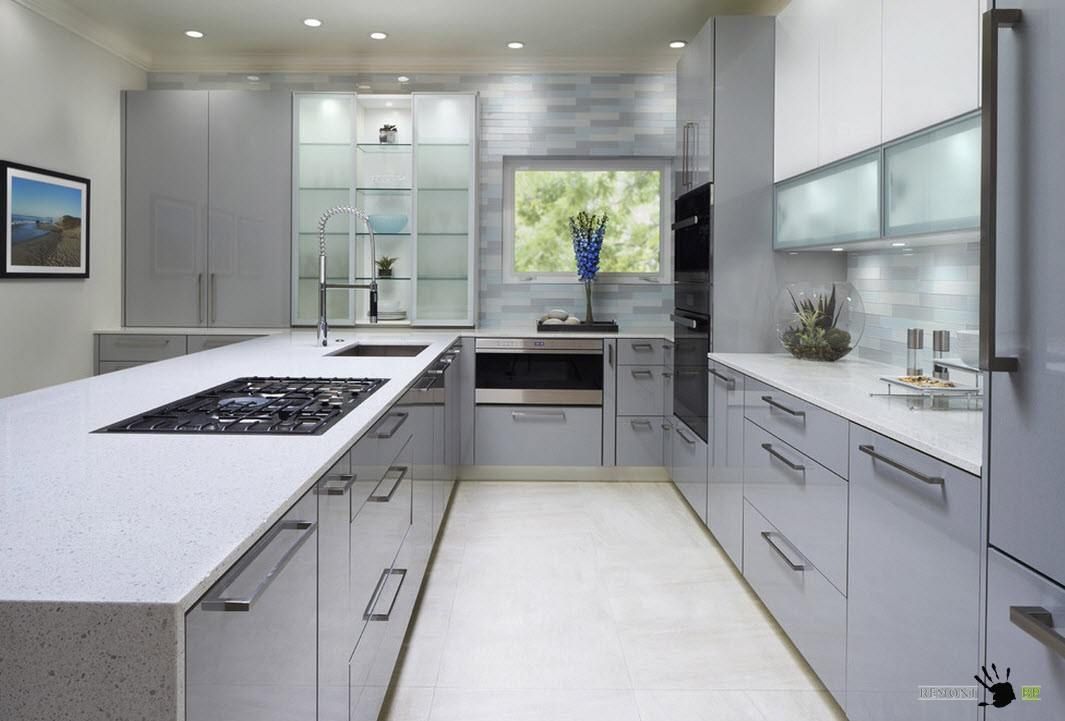
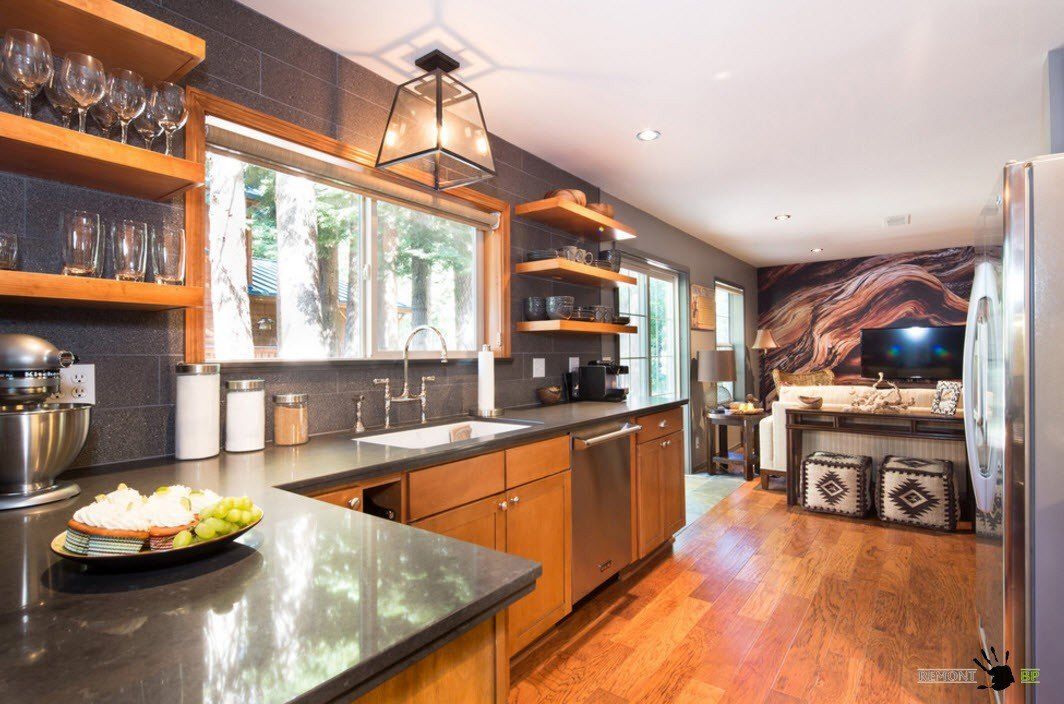
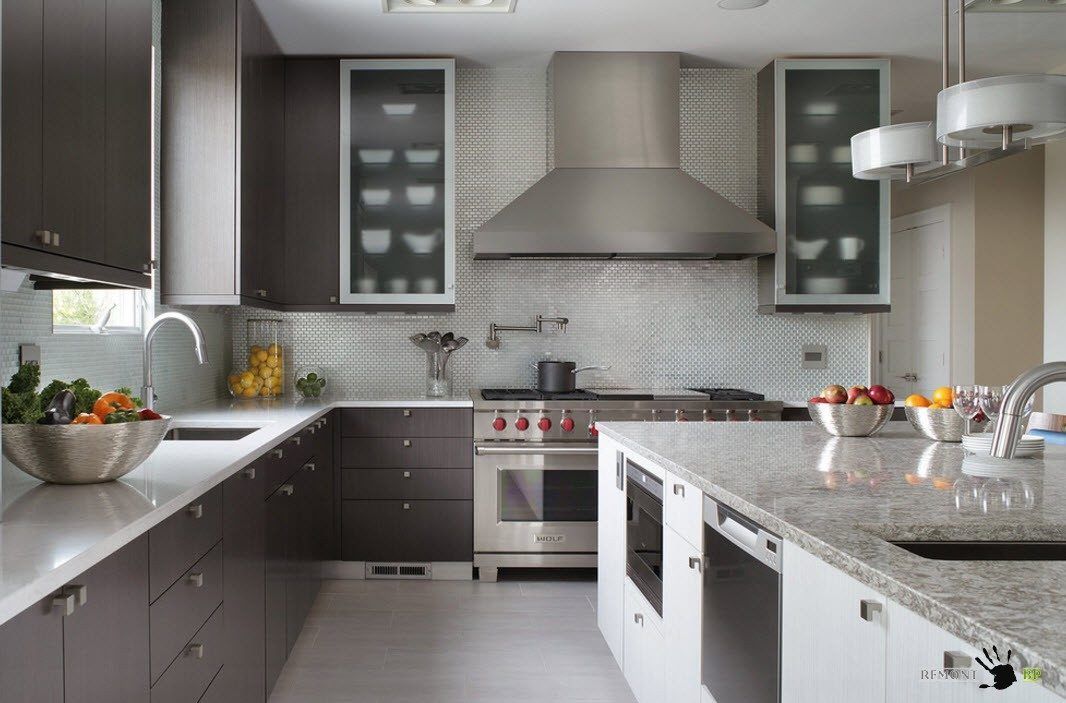

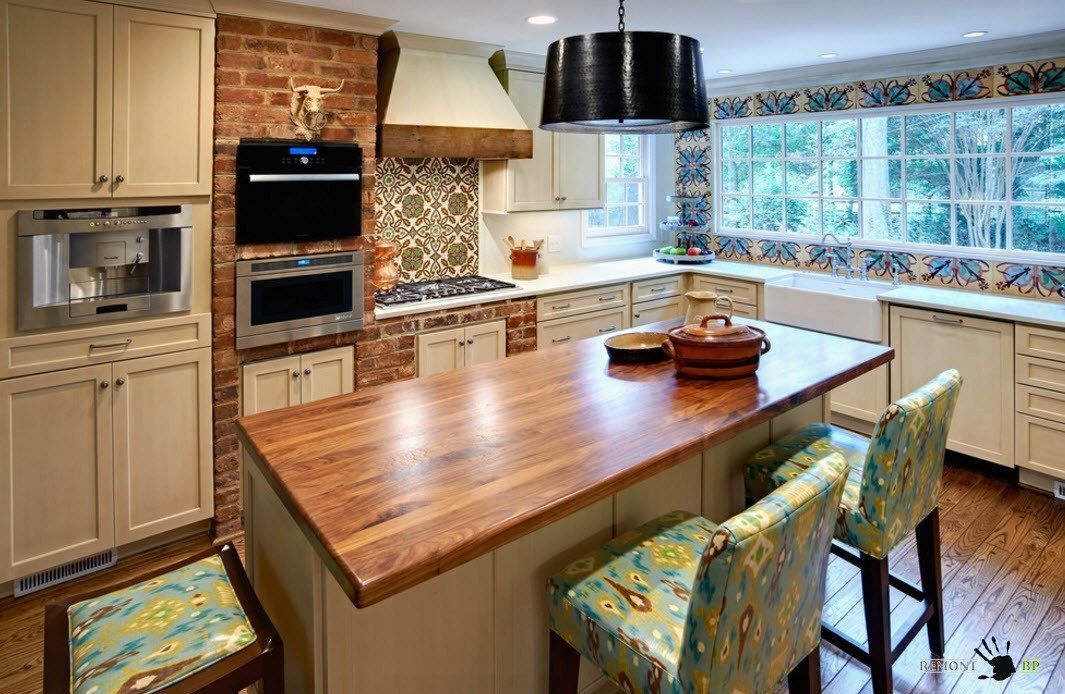
Color palette is the key to successful kitchen design
Performance characteristics, dimensions and even the price of the material we are most often interested in in the second place, the first thing we pay attention to is product design. Choosing a color for ceramic tiles, which will become the lining of a kitchen backsplash, is not easy. First of all, you need to decide – what do you want from your decoration? Should the apron stand out in the overall aesthetics of the kitchen or is this role assigned to the furniture set? Whether you choose a calm color scheme or want bright accents, because it is the apron that can become the main focal point of your kitchen.
The delicate, calm tone of ceramic tiles is in harmony with the entire palette of the kitchen. Glossy tiles echo the brilliance of stainless steel household appliances and the almost mirror-like surface of the peninsula countertop. The result is a calm image of a kitchen space in natural colors, but not devoid of modernity and special charm..
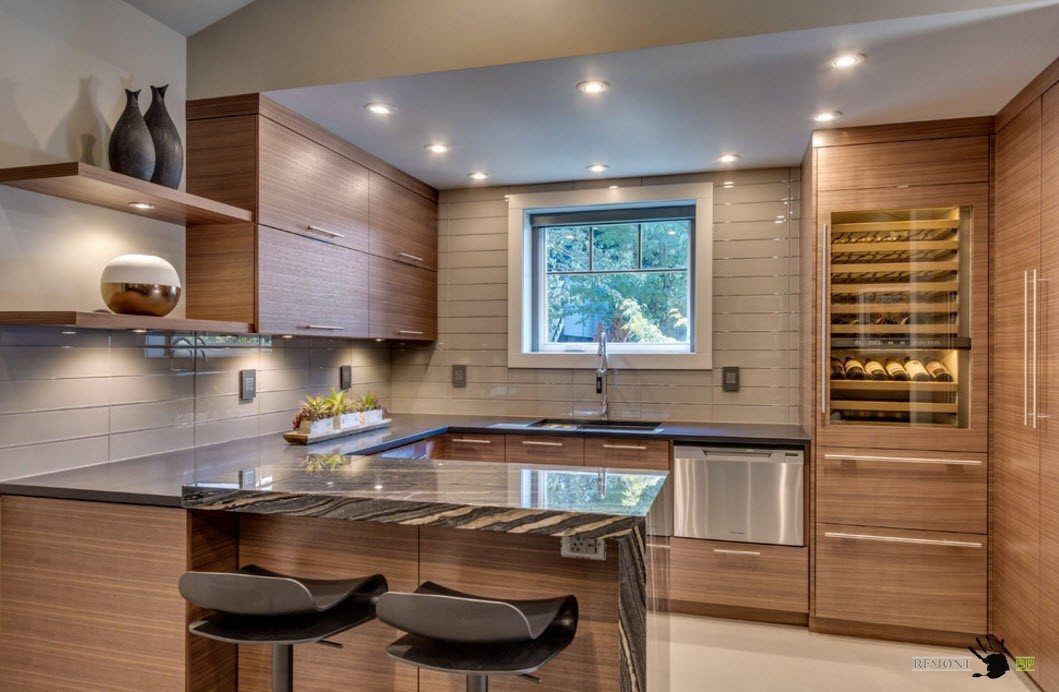
For a black and white kitchen set, a bright apron can be an effective mediator. The rich color of ceramic tiles will not only bring variety to the palette of the room, but also increase the degree of the whole image, bring festive notes.
A bright apron in combination with a light kitchen set is a win-win option. This is especially true for small rooms, where light surfaces must be used to visually increase the space, and bright accents are responsible for the variety of the palette and bringing positiveness to the light image of the kitchen..
The combination of green tones in ceramic cladding with natural, bright colors of kitchen facades creates a great mood. In such a kitchen, as if it is always spring, a holiday and a positive attitude.
Tiles with imitation of marble cover will give even a small kitchen a touch of luxury and elegance, and in a spacious room with a traditional headset will look more than organic.
The metallized coating of tiles with a slight shine and even patina will organically look in the modern style of kitchen design. Such an apron will go well with household appliances and the shine of lighting fixtures..
White apron – a timeless classic
The popularity of white ceramic tiles «Metro», probably will never pass. Classic kitchens, Provence style, retro, vintage, country and shabby chic, Scandinavian style or even minimalism – it is difficult to imagine a style that such a finish could not organically fit into. Matte and glossy, with and without bevels around the perimeter – tiles «Metro» suitable for those who vote against experiments in the interior of the kitchen, considering this room a symbol of the tradition of the home.
White tiles «Metro» in combination with dark grout will give some structure to the interior, emphasize the geometry of the kitchen.
Snow-white kitchens will never go out of fashion – many of us want to see a cooking room not only clean and light, but also light, almost airy. A white kitchen set and an apron of the same color are only slightly diluted with the sheen of household appliances and the natural shades of wooden countertops.
Drawings and ornaments – the highlight of the kitchen interior
The colorful ornaments on ceramic tiles look great in kitchen spaces with light, monochromatic furnishings. Speaking in contrast, bright tiles not only become the focal center of the kitchen, but also emphasize the severity of the lines of the laconic color palette of the kitchen set.
Facing an entire wall with colorful ornamental tiles is a design move that is not suitable for every kitchen. In a small room, it is better to refrain from such finishes and give preference to monochromatic, neutral options. In a spacious kitchen, such a technique can be justified when using ceramics in the drawing of no more than two contrasting colors and their shades, especially if they are already present in the interior design.
A colorful apron made in patchwork style will look organically only with plain furniture and preferably in light colors.
Kitchen design options with ceramic tiles in decoration
By placing the tiles horizontally in the decoration of the apron, you visually increase the space of the room, revealing the same surface with a vertical arrangement of products – you will achieve a visual increase in the height of the room.
An interesting visual impression is made by laying tiles «herringbone» by the type of flooring with parquet. The original design may require more material, but it will organically transform even the most trivial kitchen interior.
Textured tile for a kitchen backsplash is an infrequently used option. For obvious reasons, such a surface will be more difficult to clean, and it will have to be done more often than usual, but the visual effect produced by an unusual coating covers all the time and physical costs of caring for the apron.
If the kitchen sink is located near the window, then the ceramic tile cladding space can be extended to the ceiling itself, without being limited by the distance from the work surfaces to the window. Considering that the window occupies most of the wall, the abundance of ceramic finishes will not be conspicuous, and you will be spared the associations of finishing the space with the bathroom.
By combining ceramic tiles and mosaics in finishing a kitchen backsplash, you can achieve interesting looks. If you need to hide surface imperfections or veneer a plane with a rounding, niches, then mosaic tiles will cope with this task like no other material.
The diagonal arrangement of the tiles helps to visually expand the space. This technique will be especially relevant when using a dark-colored kitchen set..
Curly tiles in the lining of the kitchen backsplash look more than impressive. Especially when using a contrasting grout color to highlight the contours of the original shape.
Another original way to protect surfaces near work areas from moisture and high temperature is ceramic cladding. Tiles imitating wood or stone in the form of a honeycomb. The material consumption will be small, and you can always add products if you see that the zone of exposure to moisture, hot fat and other troubles is larger than expected.
Ceramic cladding that imitates a brick wall will organically look in kitchens made in loft style, minimalism, modern style, country and Provas.
Tiles as flooring
Many homeowners choose not to stop with ceramic backsplash and use tiles for their floors. This is a very practical, albeit expensive, option for flooring. All the advantages of ceramic tiles used for vertical surfaces can be safely transferred to floor products. And in the case of using keromogranite, we get an even stronger and more durable floor covering.
As mentioned above, wear resistance and non-slip properties are added to the usual criteria for choosing tiles for flooring, because in addition to aesthetics and performance, safety of the finish is also important to us. Clinker tiles, hardened in a special way at a high temperature, can become an original and practical choice of flooring for the kitchen space; they are a durable, easy-to-use and durable cladding material. The characteristic color of clinker products will look great in a kitchen made in country, Provence or retro style. But even for modern trends in the design of kitchen facilities, such a coating can be a highlight of the interior..
An interesting design move that will help make the interior of your kitchen unique is the use of porcelain stoneware, similar in color to the kitchen backsplash, for flooring. A practical, but at the same time original way of decorating the kitchen space can become the main feature of the interior.
Another way to diversify the interior with the help of combinatorial tiled flooring and an apron is to use a contrasting black and white combination. For example, a white tile with a dark grout is used to finish an apron, and an almost black cladding with a snow-white grout is used for the flooring. Of course, with such a coloring, the tile joints on the floor will have to pay more attention during cleaning, but the appearance of the kitchen is worth it.


